Adriano Costa
Allan Gandhi
Alexandre da Cunha
Alfredo Jaar
Ana Clara Tito
Anna Livia Taborda Monahan
Ana Mazzei
Arorá
Cildo Meireles
Cipriano
Dan Coopey
Darks Miranda
Felipe Seixas
Gabriel Branco
Hiram Latorre
Iagor Peres
Juliana dos Santos
Juliana Frontin
Marepe
Marina Borges
Palma
Paulo Nazareth
Pedro Wirz
Rodolpho Parigi
Tonico Lemos Auad
The group show Fartura [Plenty] brings together works by more than twenty artists in dialogue with a painting of the same name by Marepe. In this 2024 piece, the artist depicts a human figure with three pairs of arms seated next to a basket overflowing with fruit—the same fruit scattered on the ground, hanging from the branches that emerge in the upper left corner of the canvas, and held in the multiple hands of this “Shiva” figure in lotus position.
The decision to use this particular painting as a starting point for bringing together a wide range of works by contemporary artists—each at different stages in their careers and pursuing vastly distinct research paths—stems primarily from the idea of abundance, which has characterized Marepe’s practice from the beginning of his career in the 1990s to the present. Although his paintings are less widely known than his sculptures and installations, they have always been part of his production. Today, with the benefit of critical distance from the dominant conceptualism of thirty years ago, this aspect of his work deserves renewed attention. It also serves as a prompt to reflect, in our current moment, on the meaning of plenty — a concept that differs from the notions of accumulation and growth that have guided Western societies for centuries and are becoming increasingly unsustainable.
Going against the grain of what many artists of his generation felt compelled to do, Marepe entered the international art circuit at the turn of the millennium but never saw the need to relocate to a major urban center in order to continue working. For over thirty years, he has remained in Santo Antônio de Jesus, a town in the Recôncavo region of Bahia, located about 200 km from Salvador and home to just over 100,000 inhabitants. It is there — among family histories and the local material culture — that he finds the raw material for a practice rooted in Duchampian principles, while also echoing Surrealism, Arte Povera, and Conceptual Art — all filtered through the lens of Santo Antônio de Jesus.
Conscious of the significance of his place of origin — diametrically opposed to Duchamp’s Paris or New York — Marepe names his versions of the readymade as necéssaires: assemblages of objects from an industrial (or even pre-industrial) economy that supplies the basic needs of populations with limited access to the commodities of consumer society. And yet, as Ricardo Sardenberg aptly notes in an unpublished text: “If his poetics speak to the depths of Brazil, it’s because they emerge from that soil, without ever reducing it to an ethnographic fact.” Perhaps the reason Marepe’s work resists reductive categorizations lies precisely in its distance from the fads and clichés often dictated by the market which are more acutely felt in the so-called cultural capitals.
As someone who has closely followed Marepe’s work over the past three years, I am continually surprised by him. With no allegiance to any particular style or trend, one day he comes up with a series of scribbled radiators, another day a large star-shaped sculpture made of ladders, and then drawings and paintings that mix human figures and symbols that seem to operate within a logic that is both personal and universal. His enviable drive to invent is constant, resulting in a prolific and multifaceted body of work that finds echoes in the pieces assembled in this exhibition.
Fartura was conceived collaboratively by the Luisa Strina team with the intention of highlighting the diversity of practices and perspectives among a new generation of artists. Marepe’s presence reverberates in the materiality of artists such as Adriano Costa, Ana Clara Tito, Felipe Seixas, Paulo Nazareth, and Pedro Wirz; his iconic Embutidinhos (2001) are reflected in the folding screen by the duo Palma; his Sangue de novela (2004) in Marina Borges’ blood puddle; the surrealism of his figures finds resonance in works by Allan Gandhi, Anna Livia Taborda Monahan, Darks Miranda, Iagor Peres, and Rodolpho Parigi; the recurring image of the egg in Marepe’s paintings reappears in works by Cildo Meireles, Dan Coopey, and Pedro Wirz; botanical abundance emerges in Hiram Latorre and Juliana dos Santos; bling as a form of abundance appears in Gabriel Branco’s photographs and Alexandre da Cunha’s golden dustpan, which elevates a humble tool into an object of value; the contradiction between abundance and scarcity, embodied in the laboring bodies of the 1980s Serra Pelada gold miners, captured in historical images by Alfredo Jaar, echoes in notions of material excess and lack in the works of Arorá and Juliana Frontin. Finally, Tonico Lemos Auad’s multiplied houses reinforce the subversive nature of Marepe’s choice to remain in his hometown—or, to quote Sardenberg once again, his “radical sedentarism.”
Kiki Mazzucchelli
- X
- Tumblr
-
![Marepe Fartura, 2024 acrílica sobre tela [acrylic on canvas] 170 x 222 x 5 cm 66 7/8 x 87 3/8 x 2 in (21426) Ph: Édouard Fraipont](data:image/gif;base64,R0lGODlhAQABAIAAAAAAAP///yH5BAEAAAAALAAAAAABAAEAAAIBRAA7) MarepeFartura, 2024acrílica sobre tela
MarepeFartura, 2024acrílica sobre tela
[acrylic on canvas]170 x 222 x 5 cm
66 7/8 x 87 3/8 x 2 in(21426)Ph: Édouard Fraipont%3Cdiv%20class%3D%22artist%22%3E%3Cstrong%3EMarepe%3C/strong%3E%3C/div%3E%3Cdiv%20class%3D%22title%22%3E%3Cem%3EFartura%3C/em%3E%3Cspan%20class%3D%22comma%22%3E%2C%20%3C/span%3E2024%3C/div%3E%3Cdiv%20class%3D%22medium%22%3Eacr%26%23237%3Blica%20sobre%20tela%3Cbr%20/%3E%5Bacrylic%20on%20canvas%5D%3C/div%3E%3Cdiv%20class%3D%22dimensions%22%3E170%20x%20222%20x%205%20cm%3Cbr%20/%3E66%207/8%20x%2087%203/8%20x%202%20in%3C/div%3E%3Cdiv%20class%3D%22stock_number%22%3E%2821426%29%3C/div%3E%3Cdiv%20class%3D%22stock_number%22%3EPh%3A%20%26%23201%3Bdouard%20Fraipont%3C/div%3E -
 Alexandre da CunhaBlondie, 2015bronze161 x 25 x 21 cm
Alexandre da CunhaBlondie, 2015bronze161 x 25 x 21 cm
63 3/8 x 9 7/8 x 8 1/4 in(11785)Ph: Édouard Fraipont%3Cdiv%20class%3D%22artist%22%3E%3Cstrong%3EAlexandre%20da%20Cunha%3C/strong%3E%3C/div%3E%3Cdiv%20class%3D%22title%22%3E%3Cem%3EBlondie%3C/em%3E%3Cspan%20class%3D%22comma%22%3E%2C%20%3C/span%3E2015%3C/div%3E%3Cdiv%20class%3D%22medium%22%3Ebronze%3C/div%3E%3Cdiv%20class%3D%22dimensions%22%3E161%20x%2025%20x%2021%20cm%3Cbr%20/%3E63%203/8%20x%209%207/8%20x%208%201/4%20in%3C/div%3E%3Cdiv%20class%3D%22stock_number%22%3E%2811785%29%3C/div%3E%3Cdiv%20class%3D%22stock_number%22%3EPh%3A%20%26%23201%3Bdouard%20Fraipont%3C/div%3E -
![Palma Cardume, 2024 freijó, fibra de vidro, silicone, moedas diversas [freijó wood, fiberglass, silicone, assorted coins] 91 x 160 cm 354 3/8 x 629 7/8 in 8/8 + 2 AP (22366) Ph: Fernando Mendes](data:image/gif;base64,R0lGODlhAQABAIAAAAAAAP///yH5BAEAAAAALAAAAAABAAEAAAIBRAA7) PalmaCardume, 2024freijó, fibra de vidro, silicone, moedas diversas
PalmaCardume, 2024freijó, fibra de vidro, silicone, moedas diversas
[freijó wood, fiberglass, silicone, assorted coins]91 x 160 cm
354 3/8 x 629 7/8 in8/8 + 2 AP(22366)Ph: Fernando Mendes%3Cdiv%20class%3D%22artist%22%3E%3Cstrong%3EPalma%3C/strong%3E%3C/div%3E%3Cdiv%20class%3D%22title%22%3E%3Cem%3ECardume%3C/em%3E%3Cspan%20class%3D%22comma%22%3E%2C%20%3C/span%3E2024%3C/div%3E%3Cdiv%20class%3D%22medium%22%3Efreij%26%23243%3B%3Cspan%20class%3D%22comma%22%3E%2C%20%3C/span%3Efibra%20de%20vidro%3Cspan%20class%3D%22comma%22%3E%2C%20%3C/span%3Esilicone%3Cspan%20class%3D%22comma%22%3E%2C%20%3C/span%3Emoedas%20diversas%3Cbr%20/%3E%5Bfreij%26%23243%3B%20wood%3Cspan%20class%3D%22comma%22%3E%2C%20%3C/span%3Efiberglass%3Cspan%20class%3D%22comma%22%3E%2C%20%3C/span%3Esilicone%3Cspan%20class%3D%22comma%22%3E%2C%20%3C/span%3Eassorted%20coins%5D%3C/div%3E%3Cdiv%20class%3D%22dimensions%22%3E91%20x%20160%20cm%3Cbr%20/%3E354%203/8%20x%20629%207/8%20in%3C/div%3E%3Cdiv%20class%3D%22edition_details%22%3E8/8%20%2B%202%20AP%3C/div%3E%3Cdiv%20class%3D%22stock_number%22%3E%2822366%29%3C/div%3E%3Cdiv%20class%3D%22stock_number%22%3EPh%3A%20Fernando%20Mendes%3C/div%3E -
![Hiram Latorre Só de pedir me lembro, 2025 óleo e cera de abelha sobre linho [oil and beeswax on linen] 70.5 x 80.5 x 3.5 cm 27 3/4 x 31 3/4 x 1 3/8 in (22363) Ph: Ana Pigosso](data:image/gif;base64,R0lGODlhAQABAIAAAAAAAP///yH5BAEAAAAALAAAAAABAAEAAAIBRAA7) Hiram LatorreSó de pedir me lembro, 2025óleo e cera de abelha sobre linho
Hiram LatorreSó de pedir me lembro, 2025óleo e cera de abelha sobre linho
[oil and beeswax on linen]70.5 x 80.5 x 3.5 cm
27 3/4 x 31 3/4 x 1 3/8 in(22363)
Ph: Ana Pigosso%3Cdiv%20class%3D%22artist%22%3E%3Cstrong%3EHiram%20Latorre%3C/strong%3E%3C/div%3E%3Cdiv%20class%3D%22title%22%3E%3Cem%3ES%26%23243%3B%20de%20pedir%20me%20lembro%3C/em%3E%3Cspan%20class%3D%22comma%22%3E%2C%20%3C/span%3E2025%3C/div%3E%3Cdiv%20class%3D%22medium%22%3E%26%23243%3Bleo%20e%20cera%20de%20abelha%20sobre%20linho%3Cbr%20/%3E%5Boil%20and%20beeswax%20on%20linen%5D%3C/div%3E%3Cdiv%20class%3D%22dimensions%22%3E70.5%20x%2080.5%20x%203.5%20cm%3Cbr%20/%3E27%203/4%20x%2031%203/4%20x%201%203/8%20in%3C/div%3E%3Cdiv%20class%3D%22stock_number%22%3E%2822363%29%3Cbr%20/%3EPh%3A%20Ana%20Pigosso%3C/div%3E -
![Arorá Torre (½), 2019 prata sobre ferro e pérola [silver on iron and pearl] 80 x 10 x 8 cm 31 1/2 x 4 x 3 1/8 in (22392)](data:image/gif;base64,R0lGODlhAQABAIAAAAAAAP///yH5BAEAAAAALAAAAAABAAEAAAIBRAA7) AroráTorre (½), 2019prata sobre ferro e pérola
AroráTorre (½), 2019prata sobre ferro e pérola
[silver on iron and pearl]80 x 10 x 8 cm
31 1/2 x 4 x 3 1/8 in(22392)%3Cdiv%20class%3D%22artist%22%3E%3Cstrong%3EAror%26%23225%3B%3C/strong%3E%3C/div%3E%3Cdiv%20class%3D%22title%22%3E%3Cem%3ETorre%20%28%26%23189%3B%29%3C/em%3E%3Cspan%20class%3D%22comma%22%3E%2C%20%3C/span%3E2019%3C/div%3E%3Cdiv%20class%3D%22medium%22%3Eprata%20sobre%20ferro%20e%20p%26%23233%3Brola%3Cbr%20/%3E%5Bsilver%20on%20iron%20and%20pearl%5D%3C/div%3E%3Cdiv%20class%3D%22dimensions%22%3E80%20x%2010%20x%208%20cm%3Cbr%20/%3E31%201/2%20x%204%20x%203%201/8%20in%3C/div%3E%3Cdiv%20class%3D%22stock_number%22%3E%2822392%29%3C/div%3E -
![Iagor Peres hz II, 2025 pelematerial e acúmulo de solda inox [pelematerial and stainless steel weld build-up] 142 x 70 x 120 cm 55 7/8 x 27 1/2 x 47 1/4 in (22365) Ph: Erika Mayumi](data:image/gif;base64,R0lGODlhAQABAIAAAAAAAP///yH5BAEAAAAALAAAAAABAAEAAAIBRAA7) Iagor Pereshz II, 2025pelematerial e acúmulo de solda inox
Iagor Pereshz II, 2025pelematerial e acúmulo de solda inox
[pelematerial and stainless steel weld build-up]142 x 70 x 120 cm
55 7/8 x 27 1/2 x 47 1/4 in(22365)Ph: Erika Mayumi%3Cdiv%20class%3D%22artist%22%3E%3Cstrong%3EIagor%20Peres%3C/strong%3E%3C/div%3E%3Cdiv%20class%3D%22title%22%3E%3Cem%3Ehz%20II%3C/em%3E%3Cspan%20class%3D%22comma%22%3E%2C%20%3C/span%3E2025%3C/div%3E%3Cdiv%20class%3D%22medium%22%3Epelematerial%20e%20ac%26%23250%3Bmulo%20de%20solda%20inox%3Cbr%20/%3E%5Bpelematerial%20and%20stainless%20steel%20weld%20build-up%5D%3C/div%3E%3Cdiv%20class%3D%22dimensions%22%3E142%20x%2070%20x%20120%20cm%3Cbr%20/%3E55%207/8%20x%2027%201/2%20x%2047%201/4%20in%3C/div%3E%3Cdiv%20class%3D%22stock_number%22%3E%2822365%29%3C/div%3E%3Cdiv%20class%3D%22stock_number%22%3EPh%3A%20Erika%20Mayumi%3C/div%3E -
![Rodolpho Parigi Ash, 2025 óleo sobre linho [oil on linen] 74.3 x 74.3 x 5.5 cm 29 1/4 x 29 1/4 x 2 1/8 in (22381) Ph: Édouard Fraipont](data:image/gif;base64,R0lGODlhAQABAIAAAAAAAP///yH5BAEAAAAALAAAAAABAAEAAAIBRAA7) Rodolpho ParigiAsh, 2025óleo sobre linho
Rodolpho ParigiAsh, 2025óleo sobre linho
[oil on linen]74.3 x 74.3 x 5.5 cm
29 1/4 x 29 1/4 x 2 1/8 in(22381)Ph: Édouard Fraipont%3Cdiv%20class%3D%22artist%22%3E%3Cstrong%3ERodolpho%20Parigi%3C/strong%3E%3C/div%3E%3Cdiv%20class%3D%22title%22%3E%3Cem%3EAsh%3C/em%3E%3Cspan%20class%3D%22comma%22%3E%2C%20%3C/span%3E2025%3C/div%3E%3Cdiv%20class%3D%22medium%22%3E%26%23243%3Bleo%20sobre%20linho%3Cbr%20/%3E%5Boil%20on%20linen%5D%3C/div%3E%3Cdiv%20class%3D%22dimensions%22%3E74.3%20x%2074.3%20x%205.5%20cm%3Cbr%20/%3E29%201/4%20x%2029%201/4%20x%202%201/8%20in%3C/div%3E%3Cdiv%20class%3D%22stock_number%22%3E%2822381%29%3C/div%3E%3Cdiv%3E%26%23160%3BPh%3A%20%26%23201%3Bdouard%20Fraipont%3C/div%3E -
![Darks Miranda Incorporado, 2023 bronze, bastão oleoso, spray e acrílica [bronze, oil stick, spray and acrylic] 35 x 58 x 25 cm 13 3/4 x 22 7/8 x 9 7/8 in (22400) Ph: Ana Pigosso](data:image/gif;base64,R0lGODlhAQABAIAAAAAAAP///yH5BAEAAAAALAAAAAABAAEAAAIBRAA7) Darks MirandaIncorporado, 2023bronze, bastão oleoso, spray e acrílica
Darks MirandaIncorporado, 2023bronze, bastão oleoso, spray e acrílica
[bronze, oil stick, spray and acrylic]35 x 58 x 25 cm
13 3/4 x 22 7/8 x 9 7/8 in(22400)Ph: Ana Pigosso%3Cdiv%20class%3D%22artist%22%3E%3Cstrong%3EDarks%20Miranda%3C/strong%3E%3C/div%3E%3Cdiv%20class%3D%22title%22%3E%3Cem%3EIncorporado%3C/em%3E%3Cspan%20class%3D%22comma%22%3E%2C%20%3C/span%3E2023%3C/div%3E%3Cdiv%20class%3D%22medium%22%3Ebronze%3Cspan%20class%3D%22comma%22%3E%2C%20%3C/span%3Ebast%26%23227%3Bo%20oleoso%3Cspan%20class%3D%22comma%22%3E%2C%20%3C/span%3Espray%20e%20acr%26%23237%3Blica%3Cbr%20/%3E%5Bbronze%3Cspan%20class%3D%22comma%22%3E%2C%20%3C/span%3Eoil%20stick%3Cspan%20class%3D%22comma%22%3E%2C%20%3C/span%3Espray%20and%20acrylic%5D%3C/div%3E%3Cdiv%20class%3D%22dimensions%22%3E35%20x%2058%20x%2025%20cm%3Cbr%20/%3E13%203/4%20x%2022%207/8%20x%209%207/8%20in%3C/div%3E%3Cdiv%20class%3D%22stock_number%22%3E%2822400%29%3C/div%3E%3Cdiv%20class%3D%22stock_number%22%3EPh%3A%20Ana%20Pigosso%3C/div%3E -
![Juliana dos Santos Passagem, da série Dois tempos, 2025 aquarela, guache acrílica e flor sobre tela de algodão [watercolour, acrylic gouache and flower on cotton canvas] 323 x 151 cm 127 1/8 x 59 1/2 in (22385) Ph: Erika Mayumi](data:image/gif;base64,R0lGODlhAQABAIAAAAAAAP///yH5BAEAAAAALAAAAAABAAEAAAIBRAA7) Juliana dos SantosPassagem, da série Dois tempos, 2025aquarela, guache acrílica e flor sobre tela de algodão
Juliana dos SantosPassagem, da série Dois tempos, 2025aquarela, guache acrílica e flor sobre tela de algodão
[watercolour, acrylic gouache and flower on cotton canvas]323 x 151 cm
127 1/8 x 59 1/2 in(22385)Ph: Erika Mayumi%3Cdiv%20class%3D%22artist%22%3E%3Cstrong%3EJuliana%20dos%20Santos%3C/strong%3E%3C/div%3E%3Cdiv%20class%3D%22title%22%3E%3Cem%3EPassagem%3Cspan%20class%3D%22comma%22%3E%2C%20%3C/span%3Eda%20s%26%23233%3Brie%20Dois%20tempos%3C/em%3E%3Cspan%20class%3D%22comma%22%3E%2C%20%3C/span%3E2025%3C/div%3E%3Cdiv%20class%3D%22medium%22%3Eaquarela%3Cspan%20class%3D%22comma%22%3E%2C%20%3C/span%3Eguache%20acr%26%23237%3Blica%20e%20flor%20sobre%20tela%20de%20algod%26%23227%3Bo%3Cbr%20/%3E%5Bwatercolour%3Cspan%20class%3D%22comma%22%3E%2C%20%3C/span%3Eacrylic%20gouache%20and%20flower%20on%20cotton%20canvas%5D%3C/div%3E%3Cdiv%20class%3D%22dimensions%22%3E323%20x%20151%20cm%3Cbr%20/%3E127%201/8%20x%2059%201/2%20in%3C/div%3E%3Cdiv%20class%3D%22stock_number%22%3E%2822385%29%3C/div%3E%3Cdiv%20class%3D%22stock_number%22%3EPh%3A%20Erika%20Mayumi%3C/div%3E -
![Cildo Meireles Ovos - versão I - 1a edição, 1970/2018 cerâmica, resina sintética, metal, tinta pva, madeira [ceramic, synthetic resin, metal, pva paint, wood] 11 x 18 x 14 cm 4 3/8 x 7 1/8 x 5 1/2 in 55/100 + 20APs (#20/100) (15899) Ph: Édouard Fraipont](data:image/gif;base64,R0lGODlhAQABAIAAAAAAAP///yH5BAEAAAAALAAAAAABAAEAAAIBRAA7) Cildo MeirelesOvos - versão I - 1a edição, 1970/2018cerâmica, resina sintética, metal, tinta pva, madeira
Cildo MeirelesOvos - versão I - 1a edição, 1970/2018cerâmica, resina sintética, metal, tinta pva, madeira
[ceramic, synthetic resin, metal, pva paint, wood]11 x 18 x 14 cm
4 3/8 x 7 1/8 x 5 1/2 in55/100 + 20APs (#20/100)(15899)Ph: Édouard Fraipont%3Cdiv%20class%3D%22artist%22%3E%3Cstrong%3ECildo%20Meireles%3C/strong%3E%3C/div%3E%3Cdiv%20class%3D%22title%22%3E%3Cem%3EOvos%20-%20vers%26%23227%3Bo%20I%20-%201a%20edi%26%23231%3B%26%23227%3Bo%3C/em%3E%3Cspan%20class%3D%22comma%22%3E%2C%20%3C/span%3E1970/2018%3C/div%3E%3Cdiv%20class%3D%22medium%22%3Ecer%26%23226%3Bmica%3Cspan%20class%3D%22comma%22%3E%2C%20%3C/span%3Eresina%20sint%26%23233%3Btica%3Cspan%20class%3D%22comma%22%3E%2C%20%3C/span%3Emetal%3Cspan%20class%3D%22comma%22%3E%2C%20%3C/span%3Etinta%20pva%3Cspan%20class%3D%22comma%22%3E%2C%20%3C/span%3Emadeira%3Cbr%20/%3E%5Bceramic%3Cspan%20class%3D%22comma%22%3E%2C%20%3C/span%3Esynthetic%20resin%3Cspan%20class%3D%22comma%22%3E%2C%20%3C/span%3Emetal%3Cspan%20class%3D%22comma%22%3E%2C%20%3C/span%3Epva%20paint%3Cspan%20class%3D%22comma%22%3E%2C%20%3C/span%3Ewood%5D%3C/div%3E%3Cdiv%20class%3D%22dimensions%22%3E11%20x%2018%20x%2014%20cm%3Cbr%20/%3E4%203/8%20x%207%201/8%20x%205%201/2%20in%3C/div%3E%3Cdiv%20class%3D%22edition_details%22%3E55/100%20%2B%2020APs%20%28%2320/100%29%3C/div%3E%3Cdiv%20class%3D%22stock_number%22%3E%2815899%29%3C/div%3E%3Cdiv%20class%3D%22stock_number%22%3EPh%3A%20%26%23201%3Bdouard%20Fraipont%3C/div%3E -
![Ana Clara Tito Sem título [Untitled], 2023 argamassa, clarofilito, argila, plástico, papel, transferência fotográfica [mortar, clarofilite, clay, plastic, paper, photo transfer] 90 x 100 x 7 cm 35 3/8 x 39 3/8 x 2 3/4 in (22360) Ph: Pat Kilgore](data:image/gif;base64,R0lGODlhAQABAIAAAAAAAP///yH5BAEAAAAALAAAAAABAAEAAAIBRAA7) Ana Clara TitoSem título [Untitled], 2023argamassa, clarofilito, argila, plástico, papel, transferência fotográfica
Ana Clara TitoSem título [Untitled], 2023argamassa, clarofilito, argila, plástico, papel, transferência fotográfica
[mortar, clarofilite, clay, plastic, paper, photo transfer]90 x 100 x 7 cm
35 3/8 x 39 3/8 x 2 3/4 in(22360)Ph: Pat Kilgore%3Cdiv%20class%3D%22artist%22%3E%3Cstrong%3EAna%20Clara%20Tito%3C/strong%3E%3C/div%3E%3Cdiv%20class%3D%22title%22%3E%3Cem%3ESem%20t%26%23237%3Btulo%20%5BUntitled%5D%3C/em%3E%3Cspan%20class%3D%22comma%22%3E%2C%20%3C/span%3E2023%3C/div%3E%3Cdiv%20class%3D%22medium%22%3Eargamassa%3Cspan%20class%3D%22comma%22%3E%2C%20%3C/span%3Eclarofilito%3Cspan%20class%3D%22comma%22%3E%2C%20%3C/span%3Eargila%3Cspan%20class%3D%22comma%22%3E%2C%20%3C/span%3Epl%26%23225%3Bstico%3Cspan%20class%3D%22comma%22%3E%2C%20%3C/span%3Epapel%3Cspan%20class%3D%22comma%22%3E%2C%20%3C/span%3Etransfer%26%23234%3Bncia%20fotogr%26%23225%3Bfica%3Cbr%20/%3E%5Bmortar%3Cspan%20class%3D%22comma%22%3E%2C%20%3C/span%3Eclarofilite%3Cspan%20class%3D%22comma%22%3E%2C%20%3C/span%3Eclay%3Cspan%20class%3D%22comma%22%3E%2C%20%3C/span%3Eplastic%3Cspan%20class%3D%22comma%22%3E%2C%20%3C/span%3Epaper%3Cspan%20class%3D%22comma%22%3E%2C%20%3C/span%3Ephoto%20transfer%5D%3C/div%3E%3Cdiv%20class%3D%22dimensions%22%3E90%20x%20100%20x%207%20cm%3Cbr%20/%3E35%203/8%20x%2039%203/8%20x%202%203/4%20in%3C/div%3E%3Cdiv%20class%3D%22stock_number%22%3E%2822360%29%3C/div%3E%3Cdiv%20class%3D%22stock_number%22%3EPh%3A%20Pat%20Kilgore%3C/div%3E -
![Adriano Costa Blush, 2024 tinta acrílica, pastel e verniz sobre bronze [acrylic, pastel and varnish on bronze] 40 x 50 x 11 cm 15 3/4 x 19 3/4 x 4 3/8 in (22379)](data:image/gif;base64,R0lGODlhAQABAIAAAAAAAP///yH5BAEAAAAALAAAAAABAAEAAAIBRAA7) Adriano CostaBlush, 2024tinta acrílica, pastel e verniz sobre bronze
Adriano CostaBlush, 2024tinta acrílica, pastel e verniz sobre bronze
[acrylic, pastel and varnish on bronze]40 x 50 x 11 cm
15 3/4 x 19 3/4 x 4 3/8 in(22379)%3Cdiv%20class%3D%22artist%22%3E%3Cstrong%3EAdriano%20Costa%3C/strong%3E%3C/div%3E%3Cdiv%20class%3D%22title%22%3E%3Cem%3EBlush%3C/em%3E%3Cspan%20class%3D%22comma%22%3E%2C%20%3C/span%3E2024%3C/div%3E%3Cdiv%20class%3D%22medium%22%3Etinta%20acr%26%23237%3Blica%3Cspan%20class%3D%22comma%22%3E%2C%20%3C/span%3Epastel%20e%20verniz%20sobre%20bronze%3Cbr%20/%3E%5Bacrylic%3Cspan%20class%3D%22comma%22%3E%2C%20%3C/span%3Epastel%20and%20varnish%20on%20bronze%5D%3C/div%3E%3Cdiv%20class%3D%22dimensions%22%3E40%20x%2050%20x%2011%20cm%3Cbr%20/%3E15%203/4%20x%2019%203/4%20x%204%203/8%20in%3C/div%3E%3Cdiv%20class%3D%22stock_number%22%3E%2822379%29%3C/div%3E -
![Anna Livia Taborda Monahan Píton-sol, 2024 óleo sobre tela [oil on canvas] 42.3 x 32.3 x 4 cm 16 5/8 x 12 3/4 x 1 5/8 in (22391)](data:image/gif;base64,R0lGODlhAQABAIAAAAAAAP///yH5BAEAAAAALAAAAAABAAEAAAIBRAA7) Anna Livia Taborda MonahanPíton-sol, 2024óleo sobre tela
Anna Livia Taborda MonahanPíton-sol, 2024óleo sobre tela
[oil on canvas]42.3 x 32.3 x 4 cm
16 5/8 x 12 3/4 x 1 5/8 in(22391)%3Cdiv%20class%3D%22artist%22%3E%3Cstrong%3EAnna%20Livia%20Taborda%20Monahan%3C/strong%3E%3C/div%3E%3Cdiv%20class%3D%22title%22%3E%3Cem%3EP%26%23237%3Bton-sol%3C/em%3E%3Cspan%20class%3D%22comma%22%3E%2C%20%3C/span%3E2024%3C/div%3E%3Cdiv%20class%3D%22medium%22%3E%26%23243%3Bleo%20sobre%20tela%3Cbr%20/%3E%5Boil%20on%20canvas%5D%3C/div%3E%3Cdiv%20class%3D%22dimensions%22%3E42.3%20x%2032.3%20x%204%20cm%3Cbr%20/%3E16%205/8%20x%2012%203/4%20x%201%205/8%20in%3C/div%3E%3Cdiv%20class%3D%22stock_number%22%3E%2822391%29%3C/div%3E -
![Anna Livia Taborda Monahan Noite quente, 2024 óleo sobre tela [oil on canvas] 37.2 x 42.2 x 4 cm 14 5/8 x 16 5/8 x 1 5/8 in (22390)](data:image/gif;base64,R0lGODlhAQABAIAAAAAAAP///yH5BAEAAAAALAAAAAABAAEAAAIBRAA7) Anna Livia Taborda MonahanNoite quente, 2024óleo sobre tela
Anna Livia Taborda MonahanNoite quente, 2024óleo sobre tela
[oil on canvas]37.2 x 42.2 x 4 cm
14 5/8 x 16 5/8 x 1 5/8 in(22390)%3Cdiv%20class%3D%22artist%22%3E%3Cstrong%3EAnna%20Livia%20Taborda%20Monahan%3C/strong%3E%3C/div%3E%3Cdiv%20class%3D%22title%22%3E%3Cem%3ENoite%20quente%3C/em%3E%3Cspan%20class%3D%22comma%22%3E%2C%20%3C/span%3E2024%3C/div%3E%3Cdiv%20class%3D%22medium%22%3E%26%23243%3Bleo%20sobre%20tela%3Cbr%20/%3E%5Boil%20on%20canvas%5D%3C/div%3E%3Cdiv%20class%3D%22dimensions%22%3E37.2%20x%2042.2%20x%204%20cm%3Cbr%20/%3E14%205/8%20x%2016%205/8%20x%201%205/8%20in%3C/div%3E%3Cdiv%20class%3D%22stock_number%22%3E%2822390%29%3C/div%3E -
![Anna Livia Taborda Monahan Ilha, 2024 óleo sobre tela [oil on canvas] 32.2 x 42 x 4 cm 12 5/8 x 16 1/2 x 1 5/8 in (22389)](data:image/gif;base64,R0lGODlhAQABAIAAAAAAAP///yH5BAEAAAAALAAAAAABAAEAAAIBRAA7) Anna Livia Taborda MonahanIlha, 2024óleo sobre tela
Anna Livia Taborda MonahanIlha, 2024óleo sobre tela
[oil on canvas]32.2 x 42 x 4 cm
12 5/8 x 16 1/2 x 1 5/8 in(22389)%3Cdiv%20class%3D%22artist%22%3E%3Cstrong%3EAnna%20Livia%20Taborda%20Monahan%3C/strong%3E%3C/div%3E%3Cdiv%20class%3D%22title%22%3E%3Cem%3EIlha%3C/em%3E%3Cspan%20class%3D%22comma%22%3E%2C%20%3C/span%3E2024%3C/div%3E%3Cdiv%20class%3D%22medium%22%3E%26%23243%3Bleo%20sobre%20tela%3Cbr%20/%3E%5Boil%20on%20canvas%5D%3C/div%3E%3Cdiv%20class%3D%22dimensions%22%3E32.2%20x%2042%20x%204%20cm%3Cbr%20/%3E12%205/8%20x%2016%201/2%20x%201%205/8%20in%3C/div%3E%3Cdiv%20class%3D%22stock_number%22%3E%2822389%29%3C/div%3E -
![Marina Borges I, da série [from the series] Touched by angels, though I fall out of grace, 2024 - 2025 resina, pigmento, vidro e metal [resin, pigment, glass and metal] 7 x 14 x 20 cm 2 3/4 x 5 1/2 x 7 7/8 in (#1/5) (22409) Ph: Erika Mayumi](data:image/gif;base64,R0lGODlhAQABAIAAAAAAAP///yH5BAEAAAAALAAAAAABAAEAAAIBRAA7) Marina BorgesI, da série [from the series] Touched by angels, though I fall out of grace, 2024 - 2025resina, pigmento, vidro e metal
Marina BorgesI, da série [from the series] Touched by angels, though I fall out of grace, 2024 - 2025resina, pigmento, vidro e metal
[resin, pigment, glass and metal]7 x 14 x 20 cm
2 3/4 x 5 1/2 x 7 7/8 in(#1/5)(22409)Ph: Erika Mayumi%3Cdiv%20class%3D%22artist%22%3E%3Cstrong%3EMarina%20Borges%3C/strong%3E%3C/div%3E%3Cdiv%20class%3D%22title%22%3E%3Cem%3EI%3Cspan%20class%3D%22comma%22%3E%2C%20%3C/span%3Eda%20s%26%23233%3Brie%20%5Bfrom%20the%20series%5D%20Touched%20by%20angels%3Cspan%20class%3D%22comma%22%3E%2C%20%3C/span%3Ethough%20I%20fall%20out%20of%20grace%3C/em%3E%3Cspan%20class%3D%22comma%22%3E%2C%20%3C/span%3E2024%20-%202025%3C/div%3E%3Cdiv%20class%3D%22medium%22%3Eresina%3Cspan%20class%3D%22comma%22%3E%2C%20%3C/span%3Epigmento%3Cspan%20class%3D%22comma%22%3E%2C%20%3C/span%3Evidro%20e%20metal%3Cbr%20/%3E%5Bresin%3Cspan%20class%3D%22comma%22%3E%2C%20%3C/span%3Epigment%3Cspan%20class%3D%22comma%22%3E%2C%20%3C/span%3Eglass%20and%20metal%5D%3C/div%3E%3Cdiv%20class%3D%22dimensions%22%3E7%20x%2014%20x%2020%20cm%3Cbr%20/%3E2%203/4%20x%205%201/2%20x%207%207/8%20in%3C/div%3E%3Cdiv%20class%3D%22edition_details%22%3E%28%231/5%29%3C/div%3E%3Cdiv%20class%3D%22stock_number%22%3E%2822409%29%3C/div%3E%3Cdiv%20class%3D%22stock_number%22%3EPh%3A%20Erika%20Mayumi%3C/div%3E -
![Marina Borges Sem título (Língua) [Untitled (Tongue)], 2019 resina e spike de metal [resin and metal spike] 4 x 8 x 7 cm 1 5/8 x 3 1/8 x 2 3/4 in Edition of 2 plus 2 AP (22368)](data:image/gif;base64,R0lGODlhAQABAIAAAAAAAP///yH5BAEAAAAALAAAAAABAAEAAAIBRAA7) Marina BorgesSem título (Língua) [Untitled (Tongue)], 2019resina e spike de metal
Marina BorgesSem título (Língua) [Untitled (Tongue)], 2019resina e spike de metal
[resin and metal spike]4 x 8 x 7 cm
1 5/8 x 3 1/8 x 2 3/4 inEdition of 2 plus 2 AP(22368)%3Cdiv%20class%3D%22artist%22%3E%3Cstrong%3EMarina%20Borges%3C/strong%3E%3C/div%3E%3Cdiv%20class%3D%22title%22%3E%3Cem%3ESem%20t%26%23237%3Btulo%20%28L%26%23237%3Bngua%29%20%5BUntitled%20%28Tongue%29%5D%3C/em%3E%3Cspan%20class%3D%22comma%22%3E%2C%20%3C/span%3E2019%3C/div%3E%3Cdiv%20class%3D%22medium%22%3Eresina%20e%20spike%20de%20metal%3Cbr%20/%3E%5Bresin%20and%20metal%20spike%5D%3C/div%3E%3Cdiv%20class%3D%22dimensions%22%3E4%20x%208%20x%207%20cm%3Cbr%20/%3E1%205/8%20x%203%201/8%20x%202%203/4%20in%3C/div%3E%3Cdiv%20class%3D%22edition_details%22%3EEdition%20of%202%20plus%202%20AP%3C/div%3E%3Cdiv%20class%3D%22stock_number%22%3E%2822368%29%3C/div%3E -
![Marina Borges Sem título [Untitled], 2024 látex e pigmento [latex and pigment] dimensões variáveis [variable dimensions] (22367)](data:image/gif;base64,R0lGODlhAQABAIAAAAAAAP///yH5BAEAAAAALAAAAAABAAEAAAIBRAA7) Marina BorgesSem título [Untitled], 2024látex e pigmento
Marina BorgesSem título [Untitled], 2024látex e pigmento
[latex and pigment]dimensões variáveis
[variable dimensions](22367)%3Cdiv%20class%3D%22artist%22%3E%3Cstrong%3EMarina%20Borges%3C/strong%3E%3C/div%3E%3Cdiv%20class%3D%22title%22%3E%3Cem%3ESem%20t%26%23237%3Btulo%20%5BUntitled%5D%3C/em%3E%3Cspan%20class%3D%22comma%22%3E%2C%20%3C/span%3E2024%3C/div%3E%3Cdiv%20class%3D%22medium%22%3El%26%23225%3Btex%20e%20pigmento%3Cbr%20/%3E%5Blatex%20and%20pigment%5D%3C/div%3E%3Cdiv%20class%3D%22dimensions%22%3Edimens%26%23245%3Bes%20vari%26%23225%3Bveis%3Cbr%20/%3E%5Bvariable%20dimensions%5D%3C/div%3E%3Cdiv%20class%3D%22stock_number%22%3E%2822367%29%3C/div%3E -
![Gabriel Branco Jamal, 2023 impressão em papel algodão [printing on Photo Rag] 41.7 x 33 cm 16 3/8 x 13 in (22383)](data:image/gif;base64,R0lGODlhAQABAIAAAAAAAP///yH5BAEAAAAALAAAAAABAAEAAAIBRAA7) Gabriel BrancoJamal, 2023impressão em papel algodão
Gabriel BrancoJamal, 2023impressão em papel algodão
[printing on Photo Rag]41.7 x 33 cm
16 3/8 x 13 in(22383)%3Cdiv%20class%3D%22artist%22%3E%3Cstrong%3EGabriel%20Branco%3C/strong%3E%3C/div%3E%3Cdiv%20class%3D%22title%22%3E%3Cem%3EJamal%3C/em%3E%3Cspan%20class%3D%22comma%22%3E%2C%20%3C/span%3E2023%3C/div%3E%3Cdiv%20class%3D%22medium%22%3Eimpress%26%23227%3Bo%20em%20papel%20algod%26%23227%3Bo%3Cbr%20/%3E%5Bprinting%20on%20Photo%20Rag%5D%3C/div%3E%3Cdiv%20class%3D%22dimensions%22%3E41.7%20x%2033%20cm%3Cbr%20/%3E16%203/8%20x%2013%20in%3C/div%3E%3Cdiv%20class%3D%22stock_number%22%3E%2822383%29%3C/div%3E -
![Dan Coopey 4 douzen minus 1, 2025 junco, algodão revestido de cera, cascas de ovos [rush, wax coated cotton, egg shells] 42 x 34 x 7 cm 16 1/2 x 13 3/8 x 2 3/4 in (22380)](data:image/gif;base64,R0lGODlhAQABAIAAAAAAAP///yH5BAEAAAAALAAAAAABAAEAAAIBRAA7) Dan Coopey4 douzen minus 1, 2025junco, algodão revestido de cera, cascas de ovos
Dan Coopey4 douzen minus 1, 2025junco, algodão revestido de cera, cascas de ovos
[rush, wax coated cotton, egg shells]42 x 34 x 7 cm
16 1/2 x 13 3/8 x 2 3/4 in(22380)%3Cdiv%20class%3D%22artist%22%3E%3Cstrong%3EDan%20Coopey%3C/strong%3E%3C/div%3E%3Cdiv%20class%3D%22title%22%3E%3Cem%3E4%20douzen%20minus%201%3C/em%3E%3Cspan%20class%3D%22comma%22%3E%2C%20%3C/span%3E2025%3C/div%3E%3Cdiv%20class%3D%22medium%22%3Ejunco%3Cspan%20class%3D%22comma%22%3E%2C%20%3C/span%3Ealgod%26%23227%3Bo%20revestido%20de%20cera%3Cspan%20class%3D%22comma%22%3E%2C%20%3C/span%3Ecascas%20de%20ovos%3Cbr%20/%3E%5Brush%3Cspan%20class%3D%22comma%22%3E%2C%20%3C/span%3Ewax%20coated%20cotton%3Cspan%20class%3D%22comma%22%3E%2C%20%3C/span%3Eegg%20shells%5D%3C/div%3E%3Cdiv%20class%3D%22dimensions%22%3E42%20x%2034%20x%207%20cm%3Cbr%20/%3E16%201/2%20x%2013%203/8%20x%202%203/4%20in%3C/div%3E%3Cdiv%20class%3D%22stock_number%22%3E%2822380%29%3C/div%3E -
![Dan Coopey the double, 2023 rattan, ferro e goma de mascar [rattan, iron and chewing gum] 173 x 30 x 30 cm 68 1/8 x 11 3/4 x 11 3/4 in (22394)](data:image/gif;base64,R0lGODlhAQABAIAAAAAAAP///yH5BAEAAAAALAAAAAABAAEAAAIBRAA7) Dan Coopeythe double, 2023rattan, ferro e goma de mascar
Dan Coopeythe double, 2023rattan, ferro e goma de mascar
[rattan, iron and chewing gum]173 x 30 x 30 cm
68 1/8 x 11 3/4 x 11 3/4 in(22394)%3Cdiv%20class%3D%22artist%22%3E%3Cstrong%3EDan%20Coopey%3C/strong%3E%3C/div%3E%3Cdiv%20class%3D%22title%22%3E%3Cem%3Ethe%20double%3C/em%3E%3Cspan%20class%3D%22comma%22%3E%2C%20%3C/span%3E2023%3C/div%3E%3Cdiv%20class%3D%22medium%22%3Erattan%3Cspan%20class%3D%22comma%22%3E%2C%20%3C/span%3Eferro%20e%20goma%20de%20mascar%3Cbr%20/%3E%5Brattan%3Cspan%20class%3D%22comma%22%3E%2C%20%3C/span%3Eiron%20and%20chewing%20gum%5D%3C/div%3E%3Cdiv%20class%3D%22dimensions%22%3E173%20x%2030%20x%2030%20cm%3Cbr%20/%3E68%201/8%20x%2011%203/4%20x%2011%203/4%20in%3C/div%3E%3Cdiv%20class%3D%22stock_number%22%3E%2822394%29%3C/div%3E -
![Dan Coopey beer belly, 2022 barbante de lúpulo [hop twine] 88 x 65 x 40 cm 34 5/8 x 25 5/8 x 15 3/4 in (22395)](data:image/gif;base64,R0lGODlhAQABAIAAAAAAAP///yH5BAEAAAAALAAAAAABAAEAAAIBRAA7) Dan Coopeybeer belly, 2022barbante de lúpulo
Dan Coopeybeer belly, 2022barbante de lúpulo
[hop twine]88 x 65 x 40 cm
34 5/8 x 25 5/8 x 15 3/4 in(22395)%3Cdiv%20class%3D%22artist%22%3E%3Cstrong%3EDan%20Coopey%3C/strong%3E%3C/div%3E%3Cdiv%20class%3D%22title%22%3E%3Cem%3Ebeer%20belly%3C/em%3E%3Cspan%20class%3D%22comma%22%3E%2C%20%3C/span%3E2022%3C/div%3E%3Cdiv%20class%3D%22medium%22%3Ebarbante%20de%20l%26%23250%3Bpulo%3Cbr%20/%3E%5Bhop%20twine%5D%3C/div%3E%3Cdiv%20class%3D%22dimensions%22%3E88%20x%2065%20x%2040%20cm%3Cbr%20/%3E34%205/8%20x%2025%205/8%20x%2015%203/4%20in%3C/div%3E%3Cdiv%20class%3D%22stock_number%22%3E%2822395%29%3C/div%3E -
![Tonico Lemos Auad Sem Título, casa tramada / casa maciça, 2012 barro queimado [burnt clay] 18 x 21 x 15 cm 7 1/8 x 8 1/4 x 5 7/8 in (9280) Ph: Édouard Fraipont](data:image/gif;base64,R0lGODlhAQABAIAAAAAAAP///yH5BAEAAAAALAAAAAABAAEAAAIBRAA7) Tonico Lemos AuadSem Título, casa tramada / casa maciça, 2012barro queimado
Tonico Lemos AuadSem Título, casa tramada / casa maciça, 2012barro queimado
[burnt clay]18 x 21 x 15 cm
7 1/8 x 8 1/4 x 5 7/8 in(9280)Ph: Édouard Fraipont%3Cdiv%20class%3D%22artist%22%3E%3Cstrong%3ETonico%20Lemos%20Auad%3C/strong%3E%3C/div%3E%3Cdiv%20class%3D%22title%22%3E%3Cem%3ESem%20T%26%23237%3Btulo%3Cspan%20class%3D%22comma%22%3E%2C%20%3C/span%3Ecasa%20tramada%20/%20casa%20maci%26%23231%3Ba%3C/em%3E%3Cspan%20class%3D%22comma%22%3E%2C%20%3C/span%3E2012%3C/div%3E%3Cdiv%20class%3D%22medium%22%3Ebarro%20queimado%3Cbr%20/%3E%5Bburnt%20clay%5D%3C/div%3E%3Cdiv%20class%3D%22dimensions%22%3E18%20x%2021%20x%2015%20cm%3Cbr%20/%3E7%201/8%20x%208%201/4%20x%205%207/8%20in%3C/div%3E%3Cdiv%20class%3D%22stock_number%22%3E%289280%29%3C/div%3E%3Cdiv%20class%3D%22stock_number%22%3EPh%3A%20%26%23201%3Bdouard%20Fraipont%3C/div%3E -
![Allan Gandhi Mau Humor, 2025 óleo sobre tela [oil on canvas] 30 x 40 cm 11 3/4 x 15 3/4 in (22384) Ph: Erika Mayumi](data:image/gif;base64,R0lGODlhAQABAIAAAAAAAP///yH5BAEAAAAALAAAAAABAAEAAAIBRAA7) Allan GandhiMau Humor, 2025óleo sobre tela
Allan GandhiMau Humor, 2025óleo sobre tela
[oil on canvas]30 x 40 cm
11 3/4 x 15 3/4 in(22384)Ph: Erika Mayumi%3Cdiv%20class%3D%22artist%22%3E%3Cstrong%3EAllan%20Gandhi%3C/strong%3E%3C/div%3E%3Cdiv%20class%3D%22title%22%3E%3Cem%3EMau%20Humor%3C/em%3E%3Cspan%20class%3D%22comma%22%3E%2C%20%3C/span%3E2025%3C/div%3E%3Cdiv%20class%3D%22medium%22%3E%26%23243%3Bleo%20sobre%20tela%3Cbr%20/%3E%5Boil%20on%20canvas%5D%3C/div%3E%3Cdiv%20class%3D%22dimensions%22%3E30%20x%2040%20cm%3Cbr%20/%3E11%203/4%20x%2015%203/4%20in%3C/div%3E%3Cdiv%20class%3D%22stock_number%22%3E%2822384%29%3C/div%3E%3Cdiv%20class%3D%22stock_number%22%3EPh%3A%20Erika%20Mayumi%3C/div%3E -
![Ana Mazzei Demoiselles, 2021 - 2025 madeira tipo peroba mica, cedro e cumaru, tinta acrílica. verniz, linho, ferro e bronze [peroba mica, cedar and cumaru wood, acrylic paint, varnish, linen, iron and bronze] 225 x 300 x 100 cm 88 5/8 x 118 1/8 x 39 3/8 in (22397) Ph: Erika Mayumi](data:image/gif;base64,R0lGODlhAQABAIAAAAAAAP///yH5BAEAAAAALAAAAAABAAEAAAIBRAA7) Ana MazzeiDemoiselles, 2021 - 2025madeira tipo peroba mica, cedro e cumaru, tinta acrílica. verniz, linho, ferro e bronze
Ana MazzeiDemoiselles, 2021 - 2025madeira tipo peroba mica, cedro e cumaru, tinta acrílica. verniz, linho, ferro e bronze
[peroba mica, cedar and cumaru wood, acrylic paint, varnish, linen, iron and bronze]225 x 300 x 100 cm
88 5/8 x 118 1/8 x 39 3/8 in(22397)Ph: Erika Mayumi%3Cdiv%20class%3D%22artist%22%3E%3Cstrong%3EAna%20Mazzei%3C/strong%3E%3C/div%3E%3Cdiv%20class%3D%22title%22%3E%3Cem%3EDemoiselles%3C/em%3E%3Cspan%20class%3D%22comma%22%3E%2C%20%3C/span%3E2021%20-%202025%3C/div%3E%3Cdiv%20class%3D%22medium%22%3Emadeira%20tipo%20peroba%20mica%3Cspan%20class%3D%22comma%22%3E%2C%20%3C/span%3Ecedro%20e%20cumaru%3Cspan%20class%3D%22comma%22%3E%2C%20%3C/span%3Etinta%20acr%26%23237%3Blica.%20verniz%3Cspan%20class%3D%22comma%22%3E%2C%20%3C/span%3Elinho%3Cspan%20class%3D%22comma%22%3E%2C%20%3C/span%3Eferro%20e%20bronze%3Cbr%20/%3E%5Bperoba%20mica%3Cspan%20class%3D%22comma%22%3E%2C%20%3C/span%3Ecedar%20and%20cumaru%20wood%3Cspan%20class%3D%22comma%22%3E%2C%20%3C/span%3Eacrylic%20paint%3Cspan%20class%3D%22comma%22%3E%2C%20%3C/span%3Evarnish%3Cspan%20class%3D%22comma%22%3E%2C%20%3C/span%3Elinen%3Cspan%20class%3D%22comma%22%3E%2C%20%3C/span%3Eiron%20and%20bronze%5D%3C/div%3E%3Cdiv%20class%3D%22dimensions%22%3E225%20x%20300%20x%20100%20cm%3Cbr%20/%3E88%205/8%20x%20118%201/8%20x%2039%203/8%20in%3C/div%3E%3Cdiv%20class%3D%22stock_number%22%3E%2822397%29%3C/div%3E%3Cdiv%20class%3D%22stock_number%22%3EPh%3A%20Erika%20Mayumi%3C/div%3E -
![Cipriano Nhá, que da lama veio que da lama fica, 2020 técnica mista sobre lençol [mixed media on cotton sheet] 210 x 194 cm 82 5/8 x 76 3/8 in (22418) Ph: Édouard Fraipont](data:image/gif;base64,R0lGODlhAQABAIAAAAAAAP///yH5BAEAAAAALAAAAAABAAEAAAIBRAA7) CiprianoNhá, que da lama veio que da lama fica, 2020técnica mista sobre lençol
CiprianoNhá, que da lama veio que da lama fica, 2020técnica mista sobre lençol
[mixed media on cotton sheet]210 x 194 cm
82 5/8 x 76 3/8 in(22418)Ph: Édouard Fraipont%3Cdiv%20class%3D%22artist%22%3E%3Cstrong%3ECipriano%3C/strong%3E%3C/div%3E%3Cdiv%20class%3D%22title%22%3E%3Cem%3ENh%26%23225%3B%3Cspan%20class%3D%22comma%22%3E%2C%20%3C/span%3Eque%20da%20lama%20veio%20que%20da%20lama%20fica%3C/em%3E%3Cspan%20class%3D%22comma%22%3E%2C%20%3C/span%3E2020%3C/div%3E%3Cdiv%20class%3D%22medium%22%3Et%26%23233%3Bcnica%20mista%20sobre%20len%26%23231%3Bol%3Cbr%20/%3E%5Bmixed%20media%20on%20cotton%20sheet%5D%3C/div%3E%3Cdiv%20class%3D%22dimensions%22%3E210%20x%20194%20cm%3Cbr%20/%3E82%205/8%20x%2076%203/8%20in%3C/div%3E%3Cdiv%20class%3D%22stock_number%22%3E%2822418%29%3C/div%3E%3Cdiv%20class%3D%22stock_number%22%3EPh%3A%20%26%23201%3Bdouard%20Fraipont%3C/div%3E -
![Felipe Seixas Sem título [Untitled], 2025 concreto, pedra, areia e PLA [concrete, stone, sand and PLA] 75 x 61 x 16 cm 29 1/2 x 24 x 6 1/4 in (22362)](data:image/gif;base64,R0lGODlhAQABAIAAAAAAAP///yH5BAEAAAAALAAAAAABAAEAAAIBRAA7) Felipe SeixasSem título [Untitled], 2025concreto, pedra, areia e PLA
Felipe SeixasSem título [Untitled], 2025concreto, pedra, areia e PLA
[concrete, stone, sand and PLA]75 x 61 x 16 cm
29 1/2 x 24 x 6 1/4 in(22362)%3Cdiv%20class%3D%22artist%22%3E%3Cstrong%3EFelipe%20Seixas%3C/strong%3E%3C/div%3E%3Cdiv%20class%3D%22title%22%3E%3Cem%3ESem%20t%26%23237%3Btulo%20%5BUntitled%5D%3C/em%3E%3Cspan%20class%3D%22comma%22%3E%2C%20%3C/span%3E2025%3C/div%3E%3Cdiv%20class%3D%22medium%22%3Econcreto%3Cspan%20class%3D%22comma%22%3E%2C%20%3C/span%3Epedra%3Cspan%20class%3D%22comma%22%3E%2C%20%3C/span%3Eareia%20e%20PLA%3Cbr%20/%3E%5Bconcrete%3Cspan%20class%3D%22comma%22%3E%2C%20%3C/span%3Estone%3Cspan%20class%3D%22comma%22%3E%2C%20%3C/span%3Esand%20and%20PLA%5D%3C/div%3E%3Cdiv%20class%3D%22dimensions%22%3E75%20x%2061%20x%2016%20cm%3Cbr%20/%3E29%201/2%20x%2024%20x%206%201/4%20in%3C/div%3E%3Cdiv%20class%3D%22stock_number%22%3E%2822362%29%3C/div%3E -
![Pedro Wirz Ovo por Olho (Vale Morto), 2025 dejetos de tecido, argila vermelha, cola acrílica, espuma expansiva, suporte de restos de ferragem escovada [fabric waste, red clay, acrylic glue, expanding foam, support of brushed hardware scraps] 20 x 15 x 16 cm 7 7/8 x 5 7/8 x 6 1/4 in (22402)](data:image/gif;base64,R0lGODlhAQABAIAAAAAAAP///yH5BAEAAAAALAAAAAABAAEAAAIBRAA7) Pedro WirzOvo por Olho (Vale Morto), 2025dejetos de tecido, argila vermelha, cola acrílica, espuma expansiva, suporte de restos de ferragem escovada
Pedro WirzOvo por Olho (Vale Morto), 2025dejetos de tecido, argila vermelha, cola acrílica, espuma expansiva, suporte de restos de ferragem escovada
[fabric waste, red clay, acrylic glue, expanding foam, support of brushed hardware scraps]20 x 15 x 16 cm
7 7/8 x 5 7/8 x 6 1/4 in(22402)%3Cdiv%20class%3D%22artist%22%3E%3Cstrong%3EPedro%20Wirz%3C/strong%3E%3C/div%3E%3Cdiv%20class%3D%22title%22%3E%3Cem%3EOvo%20por%20Olho%20%28Vale%20Morto%29%3C/em%3E%3Cspan%20class%3D%22comma%22%3E%2C%20%3C/span%3E2025%3C/div%3E%3Cdiv%20class%3D%22medium%22%3Edejetos%20de%20tecido%3Cspan%20class%3D%22comma%22%3E%2C%20%3C/span%3Eargila%20vermelha%3Cspan%20class%3D%22comma%22%3E%2C%20%3C/span%3Ecola%20acr%26%23237%3Blica%3Cspan%20class%3D%22comma%22%3E%2C%20%3C/span%3Eespuma%20expansiva%3Cspan%20class%3D%22comma%22%3E%2C%20%3C/span%3Esuporte%20de%20restos%20de%20ferragem%20escovada%3Cbr%20/%3E%5Bfabric%20waste%3Cspan%20class%3D%22comma%22%3E%2C%20%3C/span%3Ered%20clay%3Cspan%20class%3D%22comma%22%3E%2C%20%3C/span%3Eacrylic%20glue%3Cspan%20class%3D%22comma%22%3E%2C%20%3C/span%3Eexpanding%20foam%3Cspan%20class%3D%22comma%22%3E%2C%20%3C/span%3Esupport%20of%20brushed%20hardware%20scraps%5D%3C/div%3E%3Cdiv%20class%3D%22dimensions%22%3E20%20x%2015%20x%2016%20cm%3Cbr%20/%3E7%207/8%20x%205%207/8%20x%206%201/4%20in%3C/div%3E%3Cdiv%20class%3D%22dimensions%22%3E%3Cspan%3E%2822402%29%3C/span%3E%3C/div%3E -
![Pedro Wirz Ovo por Olho (Gel Vermelho), 2024 dejetos de tecido, argila vermelha, cola acrílica, espuma expansiva, suporte de restos de ferragem escovada [fabric waste, red clay, acrylic glue, expanding foam, support of brushed hardware scraps] 20 x 15 x 16 cm 7 7/8 x 5 7/8 x 6 1/4 in (22419) Ph: Édouard Fraipont](data:image/gif;base64,R0lGODlhAQABAIAAAAAAAP///yH5BAEAAAAALAAAAAABAAEAAAIBRAA7) Pedro WirzOvo por Olho (Gel Vermelho), 2024dejetos de tecido, argila vermelha, cola acrílica, espuma expansiva, suporte de restos de ferragem escovada
Pedro WirzOvo por Olho (Gel Vermelho), 2024dejetos de tecido, argila vermelha, cola acrílica, espuma expansiva, suporte de restos de ferragem escovada
[fabric waste, red clay, acrylic glue, expanding foam, support of brushed hardware scraps]20 x 15 x 16 cm
7 7/8 x 5 7/8 x 6 1/4 in(22419)Ph: Édouard Fraipont%3Cdiv%20class%3D%22artist%22%3E%3Cstrong%3EPedro%20Wirz%3C/strong%3E%3C/div%3E%3Cdiv%20class%3D%22title%22%3E%3Cem%3EOvo%20por%20Olho%20%28Gel%20Vermelho%29%3C/em%3E%3Cspan%20class%3D%22comma%22%3E%2C%20%3C/span%3E2024%3C/div%3E%3Cdiv%20class%3D%22medium%22%3Edejetos%20de%20tecido%3Cspan%20class%3D%22comma%22%3E%2C%20%3C/span%3Eargila%20vermelha%3Cspan%20class%3D%22comma%22%3E%2C%20%3C/span%3Ecola%20acr%26%23237%3Blica%3Cspan%20class%3D%22comma%22%3E%2C%20%3C/span%3Eespuma%20expansiva%3Cspan%20class%3D%22comma%22%3E%2C%20%3C/span%3Esuporte%20de%20restos%20de%20ferragem%20escovada%3Cbr%20/%3E%5Bfabric%20waste%3Cspan%20class%3D%22comma%22%3E%2C%20%3C/span%3Ered%20clay%3Cspan%20class%3D%22comma%22%3E%2C%20%3C/span%3Eacrylic%20glue%3Cspan%20class%3D%22comma%22%3E%2C%20%3C/span%3Eexpanding%20foam%3Cspan%20class%3D%22comma%22%3E%2C%20%3C/span%3Esupport%20of%20brushed%20hardware%20scraps%5D%3C/div%3E%3Cdiv%20class%3D%22dimensions%22%3E20%20x%2015%20x%2016%20cm%3Cbr%20/%3E7%207/8%20x%205%207/8%20x%206%201/4%20in%3C/div%3E%3Cdiv%20class%3D%22stock_number%22%3E%2822419%29%3C/div%3E%3Cdiv%20class%3D%22stock_number%22%3EPh%3A%20%26%23201%3Bdouard%20Fraipont%3C/div%3E -
![Paulo Nazareth CRIADO MUDO [Ou despensa] Mulatt-Baianinha, 2021 resina, objetos diversos e madeira [resin, various objects and wood] 61.5 x 34.5 x 29.5 cm 24 1/4 x 13 5/8 x 11 5/8 in (22401)](data:image/gif;base64,R0lGODlhAQABAIAAAAAAAP///yH5BAEAAAAALAAAAAABAAEAAAIBRAA7) Paulo NazarethCRIADO MUDO [Ou despensa] Mulatt-Baianinha, 2021resina, objetos diversos e madeira
Paulo NazarethCRIADO MUDO [Ou despensa] Mulatt-Baianinha, 2021resina, objetos diversos e madeira
[resin, various objects and wood]61.5 x 34.5 x 29.5 cm
24 1/4 x 13 5/8 x 11 5/8 in(22401)%3Cdiv%20class%3D%22artist%22%3E%3Cstrong%3EPaulo%20Nazareth%3C/strong%3E%3C/div%3E%3Cdiv%20class%3D%22title%22%3E%3Cem%3ECRIADO%20MUDO%20%5BOu%20despensa%5D%20Mulatt-Baianinha%3C/em%3E%3Cspan%20class%3D%22comma%22%3E%2C%20%3C/span%3E2021%3C/div%3E%3Cdiv%20class%3D%22medium%22%3Eresina%3Cspan%20class%3D%22comma%22%3E%2C%20%3C/span%3Eobjetos%20diversos%20e%20madeira%3Cbr%20/%3E%5Bresin%3Cspan%20class%3D%22comma%22%3E%2C%20%3C/span%3Evarious%20objects%20and%20wood%5D%3C/div%3E%3Cdiv%20class%3D%22dimensions%22%3E61.5%20x%2034.5%20x%2029.5%20cm%3Cbr%20/%3E24%201/4%20x%2013%205/8%20x%2011%205/8%20in%3C/div%3E%3Cdiv%20class%3D%22stock_number%22%3E%2822401%29%3C/div%3E -
![Juliana Frontin Contra-volume, 2025 resina sobre linho [resin on linen] 40.5 x 46 x 2.5 cm 16 x 18 1/8 x 1 in (22398)](data:image/gif;base64,R0lGODlhAQABAIAAAAAAAP///yH5BAEAAAAALAAAAAABAAEAAAIBRAA7) Juliana FrontinContra-volume, 2025resina sobre linho
Juliana FrontinContra-volume, 2025resina sobre linho
[resin on linen]40.5 x 46 x 2.5 cm
16 x 18 1/8 x 1 in(22398)%3Cdiv%20class%3D%22artist%22%3E%3Cstrong%3EJuliana%20Frontin%3C/strong%3E%3C/div%3E%3Cdiv%20class%3D%22title%22%3E%3Cem%3EContra-volume%3C/em%3E%3Cspan%20class%3D%22comma%22%3E%2C%20%3C/span%3E2025%3C/div%3E%3Cdiv%20class%3D%22medium%22%3Eresina%20sobre%20linho%3Cbr%20/%3E%5Bresin%20on%20linen%5D%3C/div%3E%3Cdiv%20class%3D%22dimensions%22%3E40.5%20x%2046%20x%202.5%20cm%3Cbr%20/%3E16%20x%2018%201/8%20x%201%20in%3C/div%3E%3Cdiv%20class%3D%22stock_number%22%3E%2822398%29%3C/div%3E -
![Juliana Frontin volume e repetição, 2023 embalagens de caixas vazias de fita empilhadas [empty packaging from stacked tape boxes] 7 x 11 x 7 cm 2 3/4 x 4 3/8 x 2 3/4 in (22399)](data:image/gif;base64,R0lGODlhAQABAIAAAAAAAP///yH5BAEAAAAALAAAAAABAAEAAAIBRAA7) Juliana Frontinvolume e repetição, 2023embalagens de caixas vazias de fita empilhadas
Juliana Frontinvolume e repetição, 2023embalagens de caixas vazias de fita empilhadas
[empty packaging from stacked tape boxes]7 x 11 x 7 cm
2 3/4 x 4 3/8 x 2 3/4 in(22399)%3Cdiv%20class%3D%22artist%22%3E%3Cstrong%3EJuliana%20Frontin%3C/strong%3E%3C/div%3E%3Cdiv%20class%3D%22title%22%3E%3Cem%3Evolume%20e%20repeti%26%23231%3B%26%23227%3Bo%3C/em%3E%3Cspan%20class%3D%22comma%22%3E%2C%20%3C/span%3E2023%3C/div%3E%3Cdiv%20class%3D%22medium%22%3Eembalagens%20de%20caixas%20vazias%20de%20fita%20empilhadas%3Cbr%20/%3E%5Bempty%20packaging%20from%20stacked%20tape%20boxes%5D%3C/div%3E%3Cdiv%20class%3D%22dimensions%22%3E7%20x%2011%20x%207%20cm%3Cbr%20/%3E2%203/4%20x%204%203/8%20x%202%203/4%20in%3C/div%3E%3Cdiv%20class%3D%22stock_number%22%3E%2822399%29%3C/div%3E -
![Alfredo Jaar Gold in the Morning (Gaze), 1985 impressão fujiflex [fujiflex printing] 83 x 62.5 x 4 cm 32 5/8 x 24 5/8 x 1 5/8 in 1/30 + 6 AP (#1/30) (11917) Ph: Erika Mayumi](data:image/gif;base64,R0lGODlhAQABAIAAAAAAAP///yH5BAEAAAAALAAAAAABAAEAAAIBRAA7) Alfredo JaarGold in the Morning (Gaze), 1985impressão fujiflex
Alfredo JaarGold in the Morning (Gaze), 1985impressão fujiflex
[fujiflex printing]83 x 62.5 x 4 cm
32 5/8 x 24 5/8 x 1 5/8 in1/30 + 6 AP (#1/30)(11917)Ph: Erika Mayumi%3Cdiv%20class%3D%22artist%22%3E%3Cstrong%3EAlfredo%20Jaar%3C/strong%3E%3C/div%3E%3Cdiv%20class%3D%22title%22%3E%3Cem%3EGold%20in%20the%20Morning%20%28Gaze%29%3C/em%3E%3Cspan%20class%3D%22comma%22%3E%2C%20%3C/span%3E1985%3C/div%3E%3Cdiv%20class%3D%22medium%22%3Eimpress%26%23227%3Bo%20fujiflex%3Cbr%20/%3E%5Bfujiflex%20printing%5D%3C/div%3E%3Cdiv%20class%3D%22dimensions%22%3E83%20x%2062.5%20x%204%20cm%3Cbr%20/%3E32%205/8%20x%2024%205/8%20x%201%205/8%20in%3C/div%3E%3Cdiv%20class%3D%22edition_details%22%3E1/30%20%2B%206%20AP%20%28%231/30%29%3C/div%3E%3Cdiv%20class%3D%22stock_number%22%3E%2811917%29%3C/div%3E%3Cdiv%20class%3D%22stock_number%22%3EPh%3A%20Erika%20Mayumi%3C/div%3E

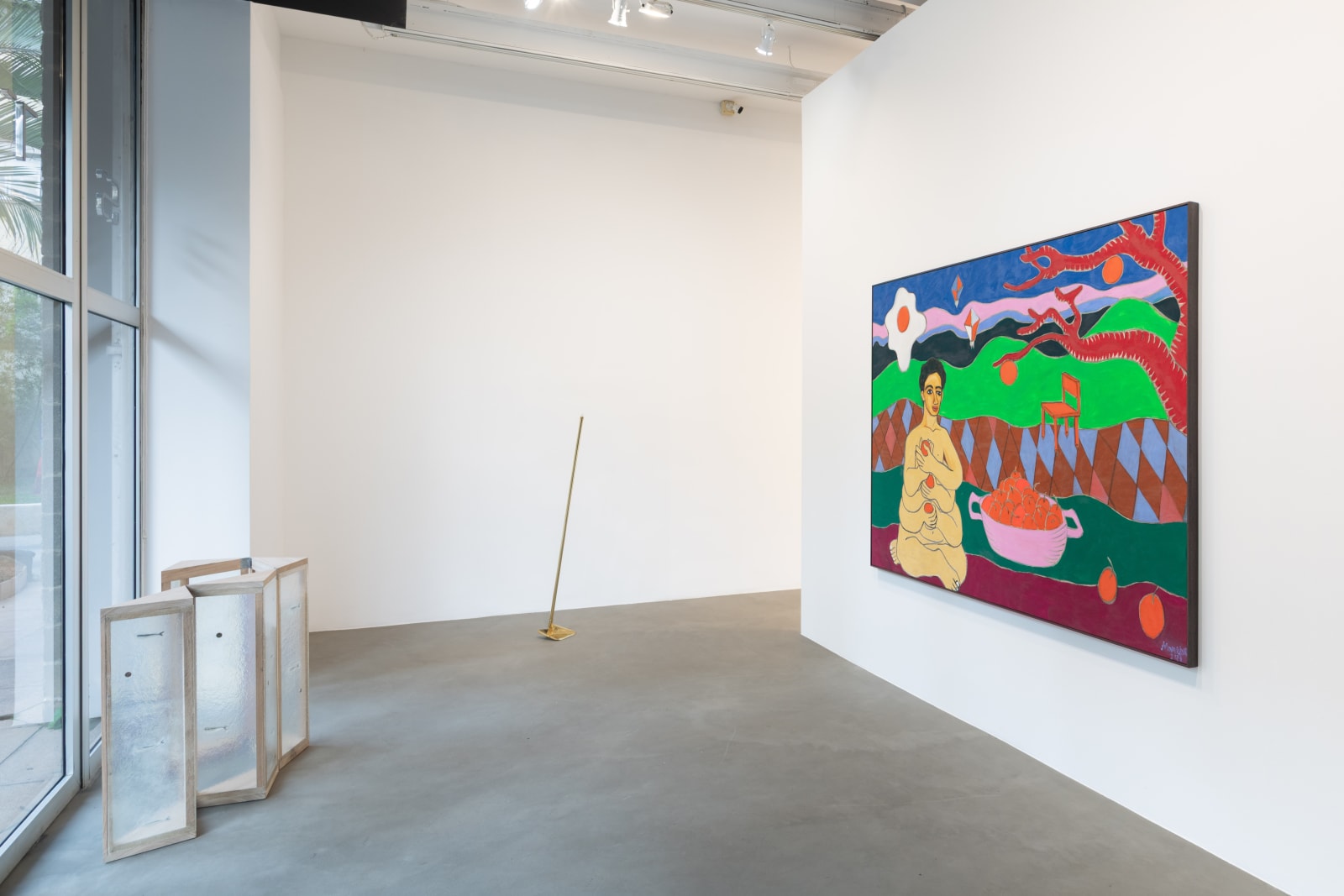
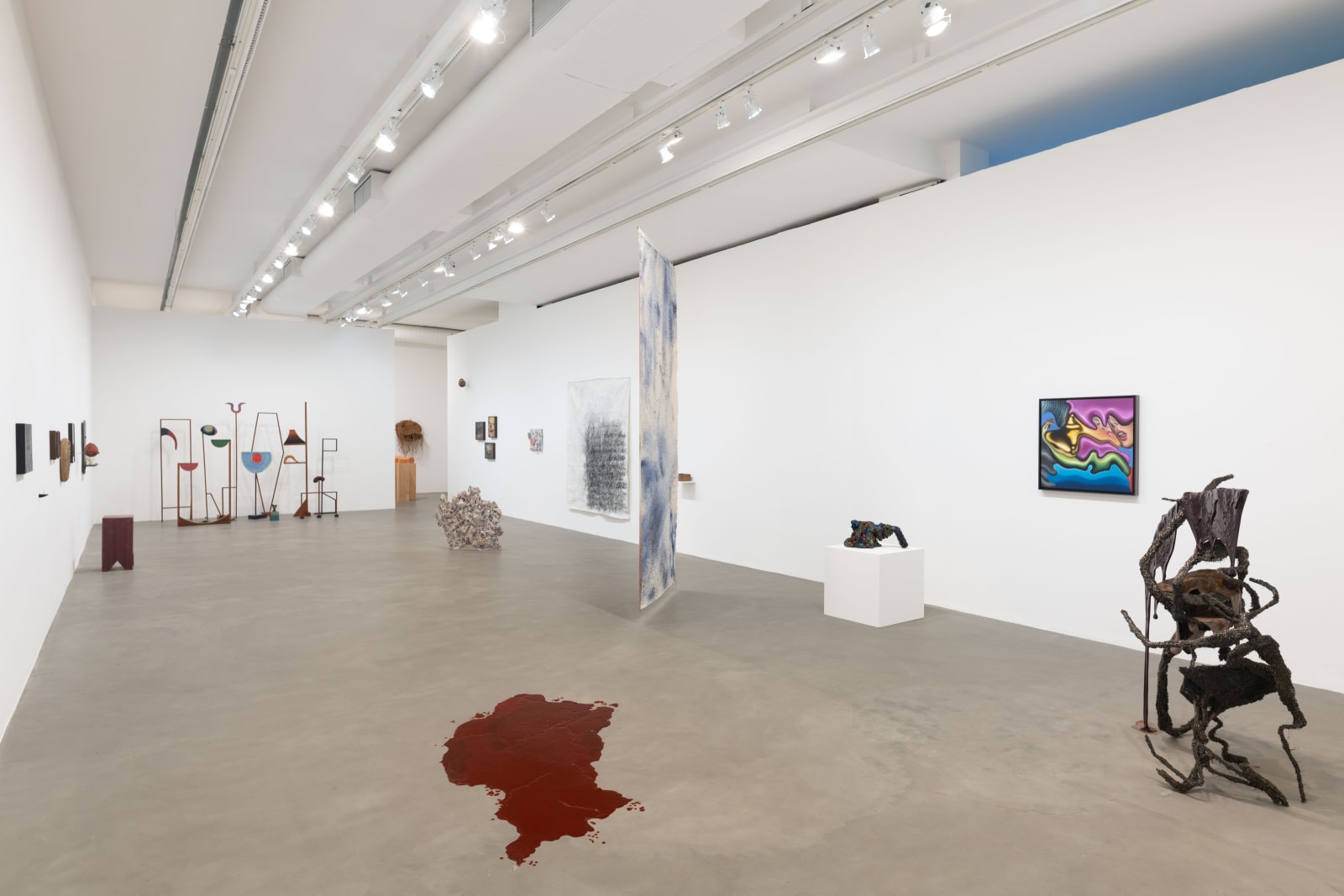
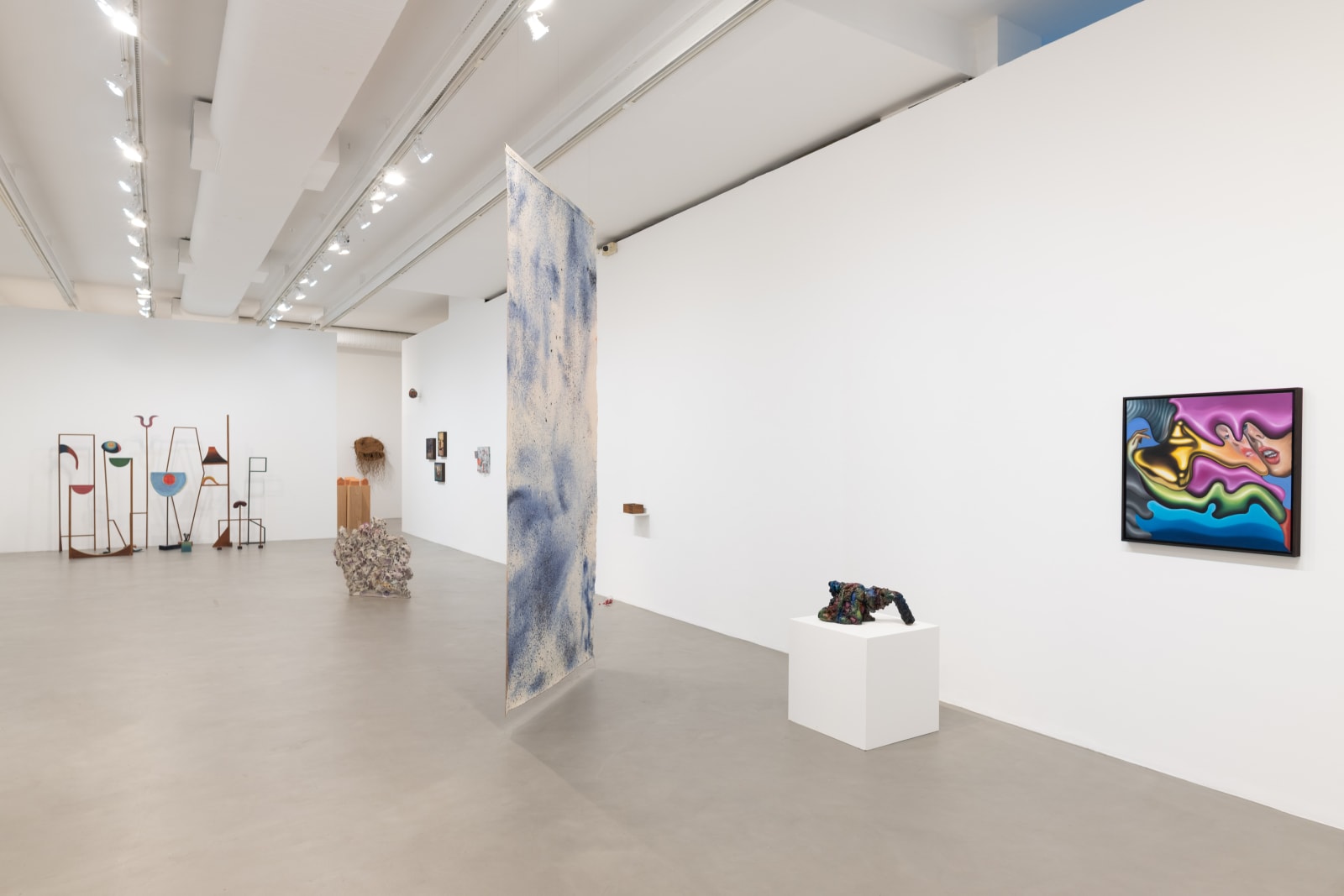
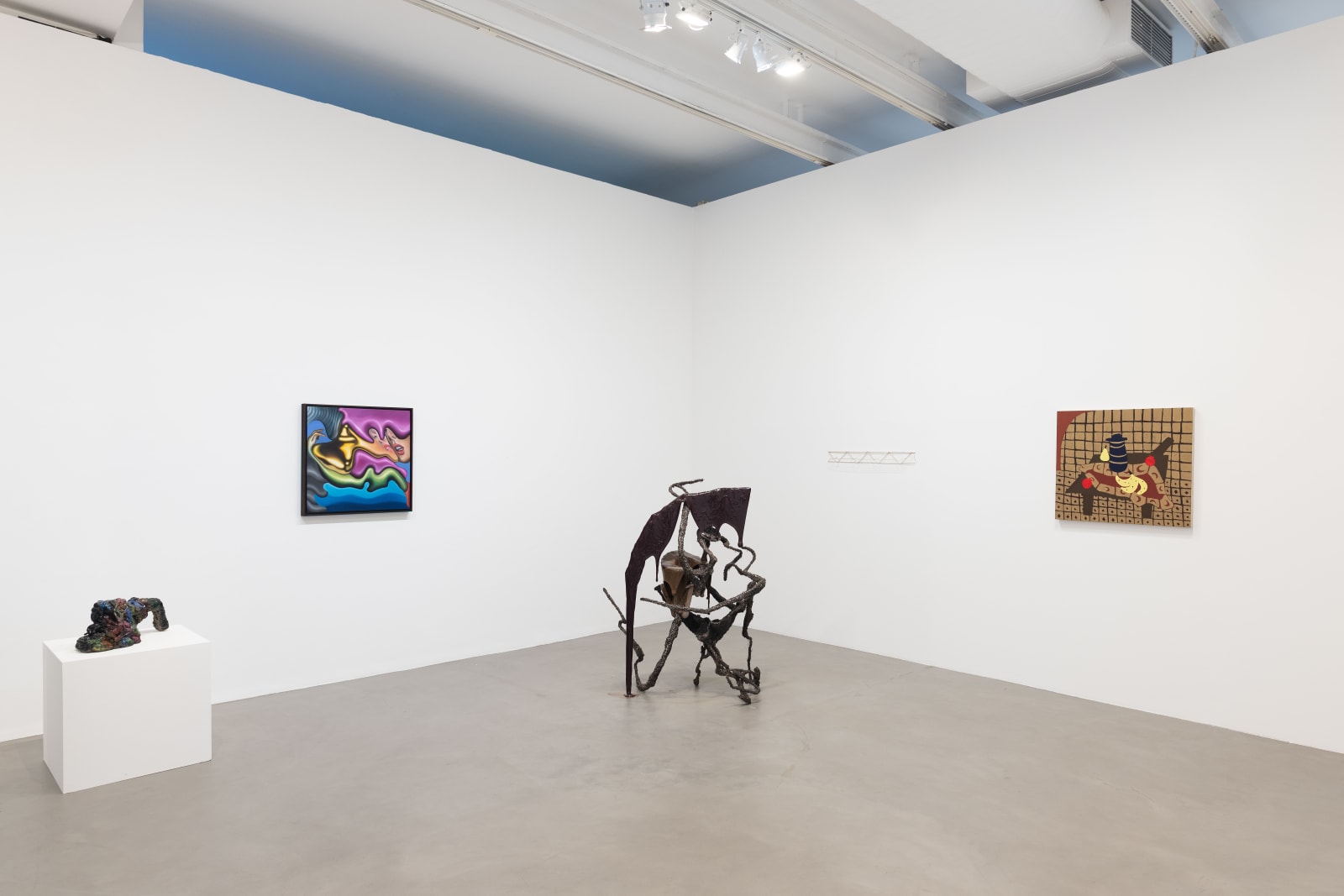
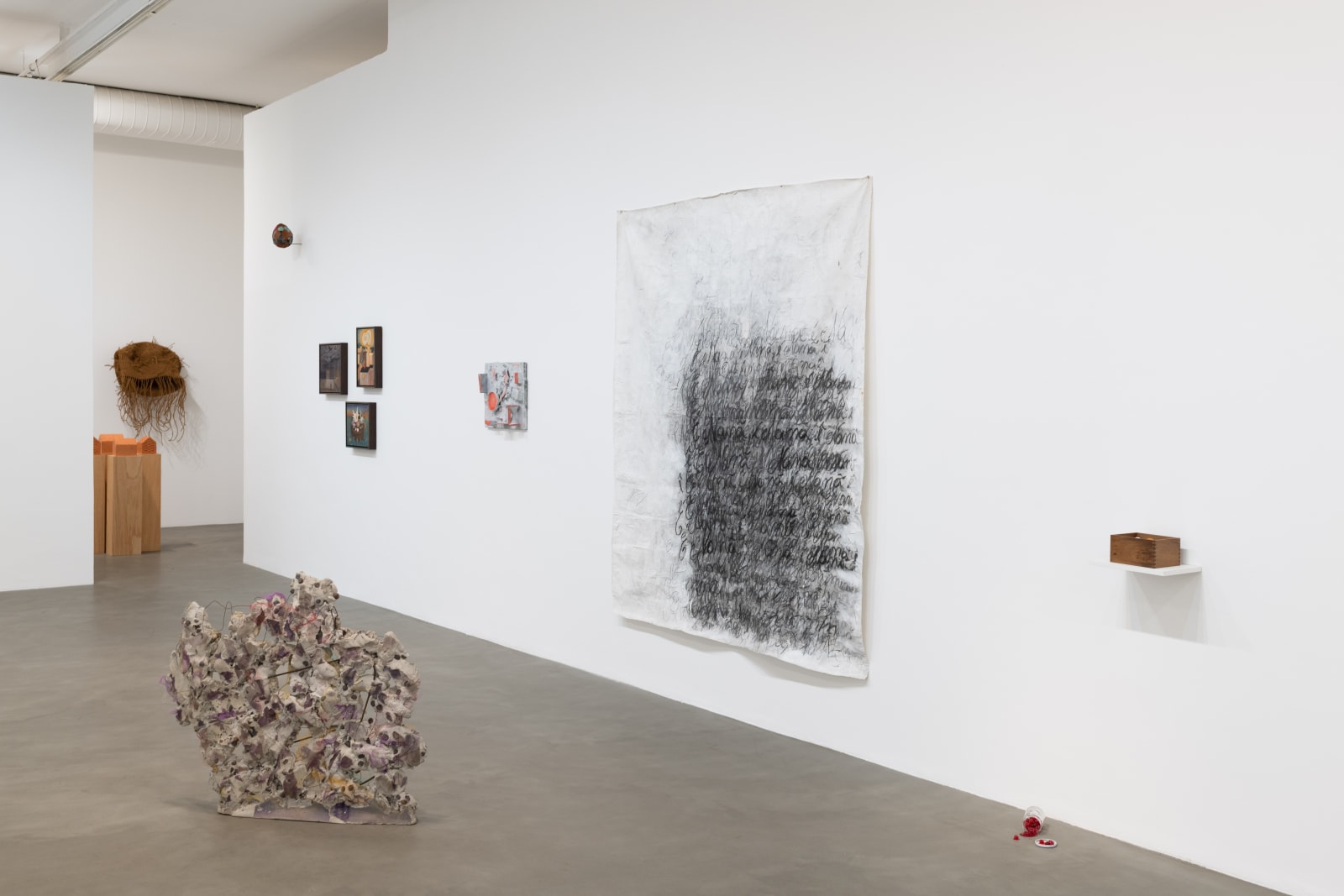

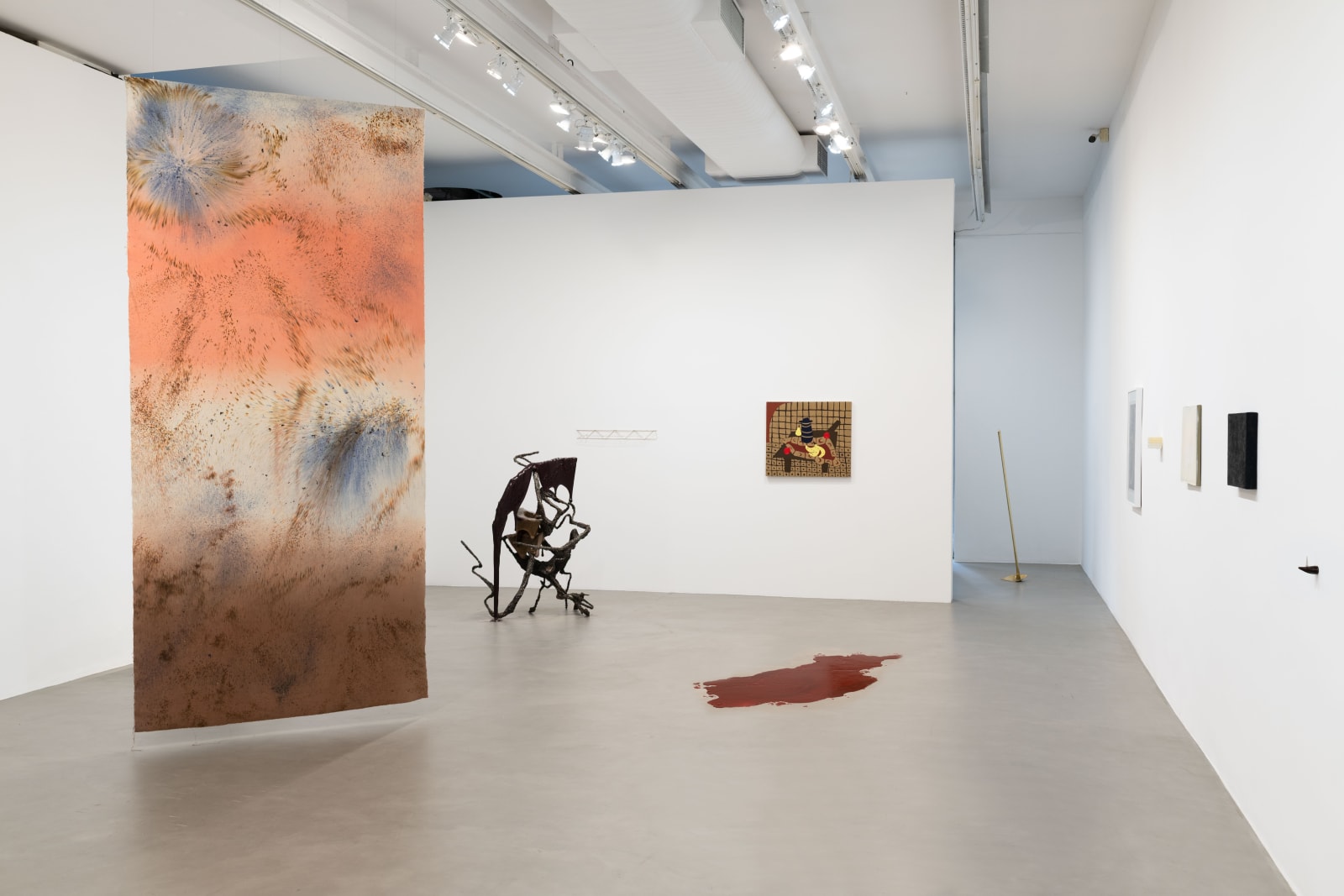
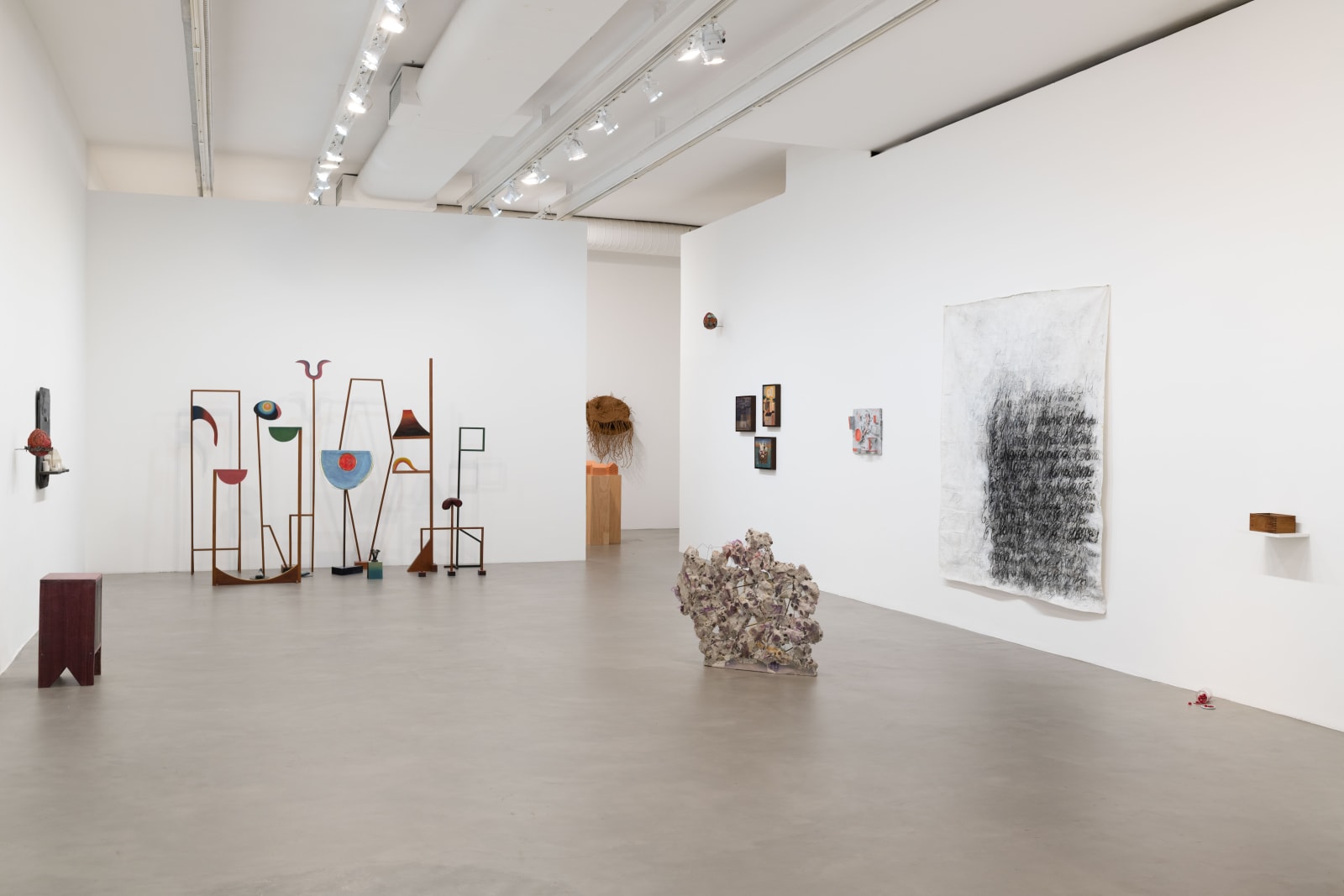
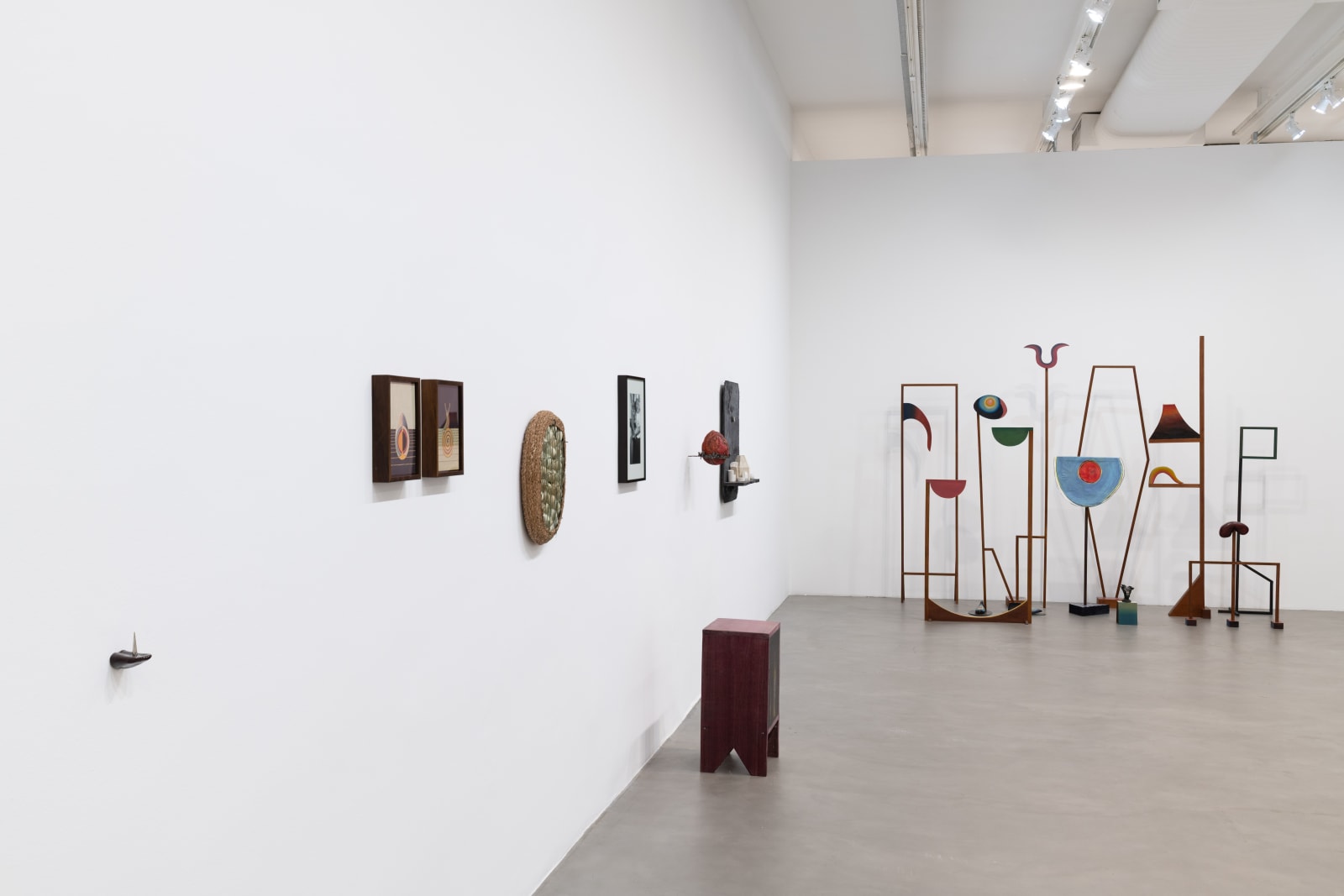
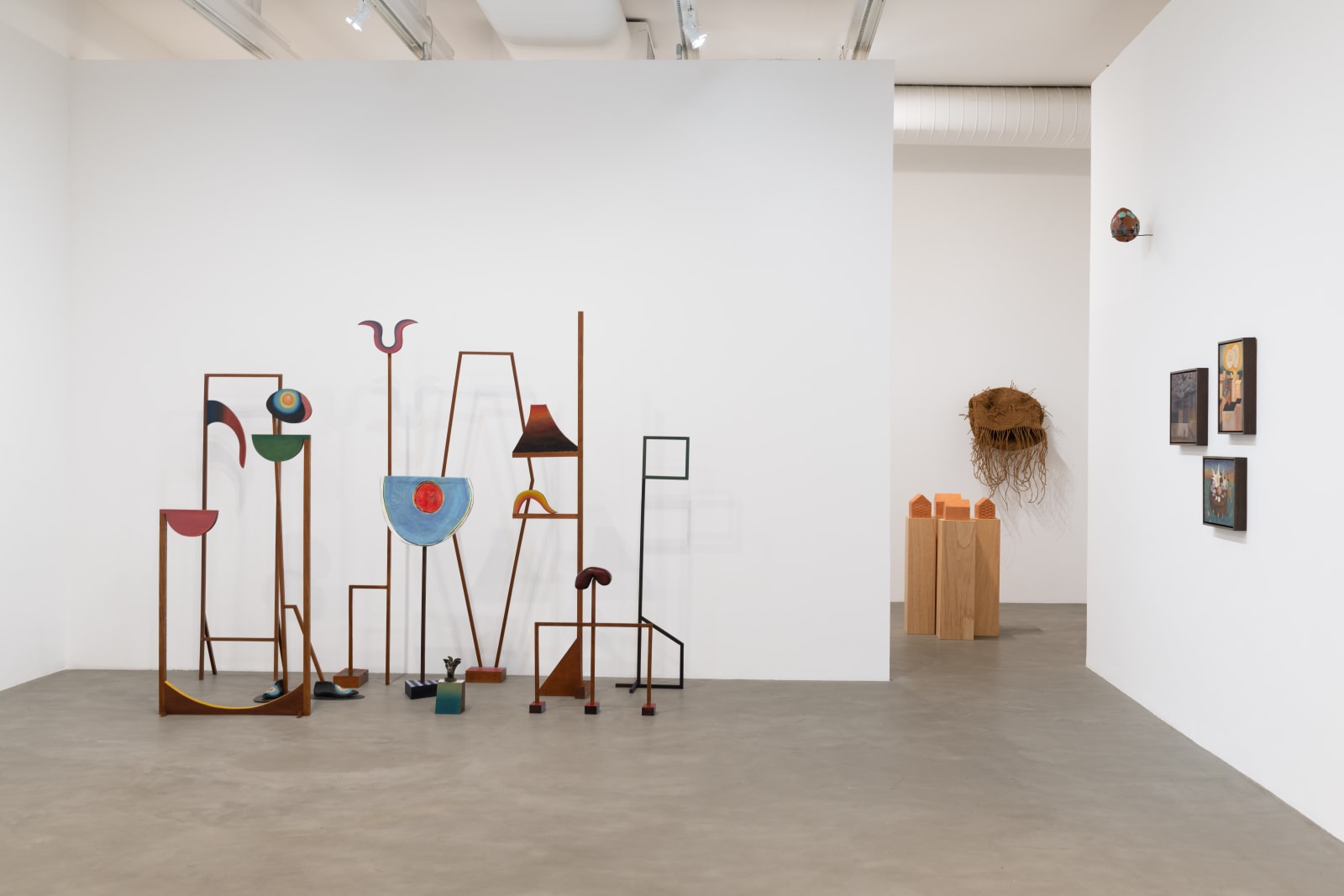
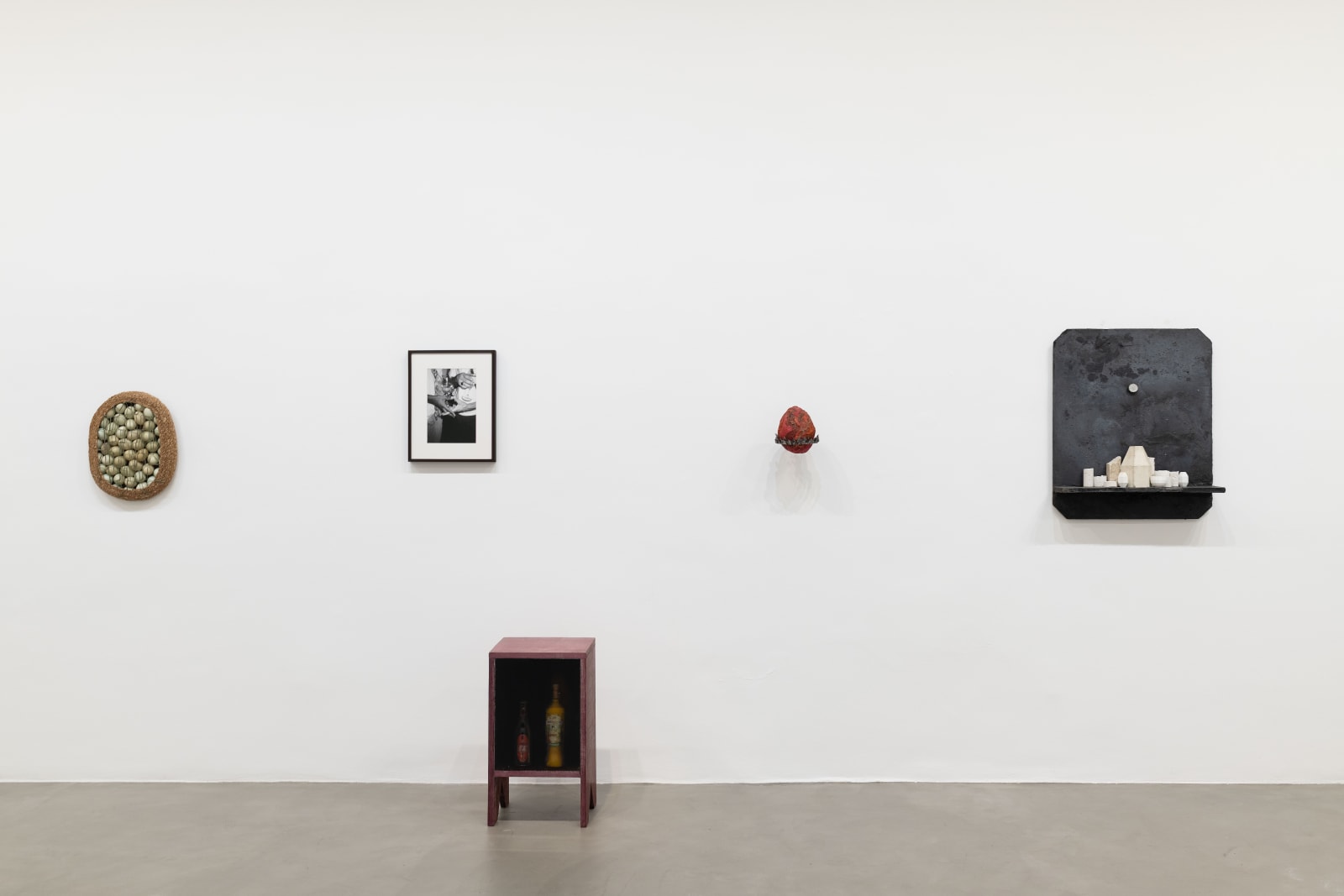
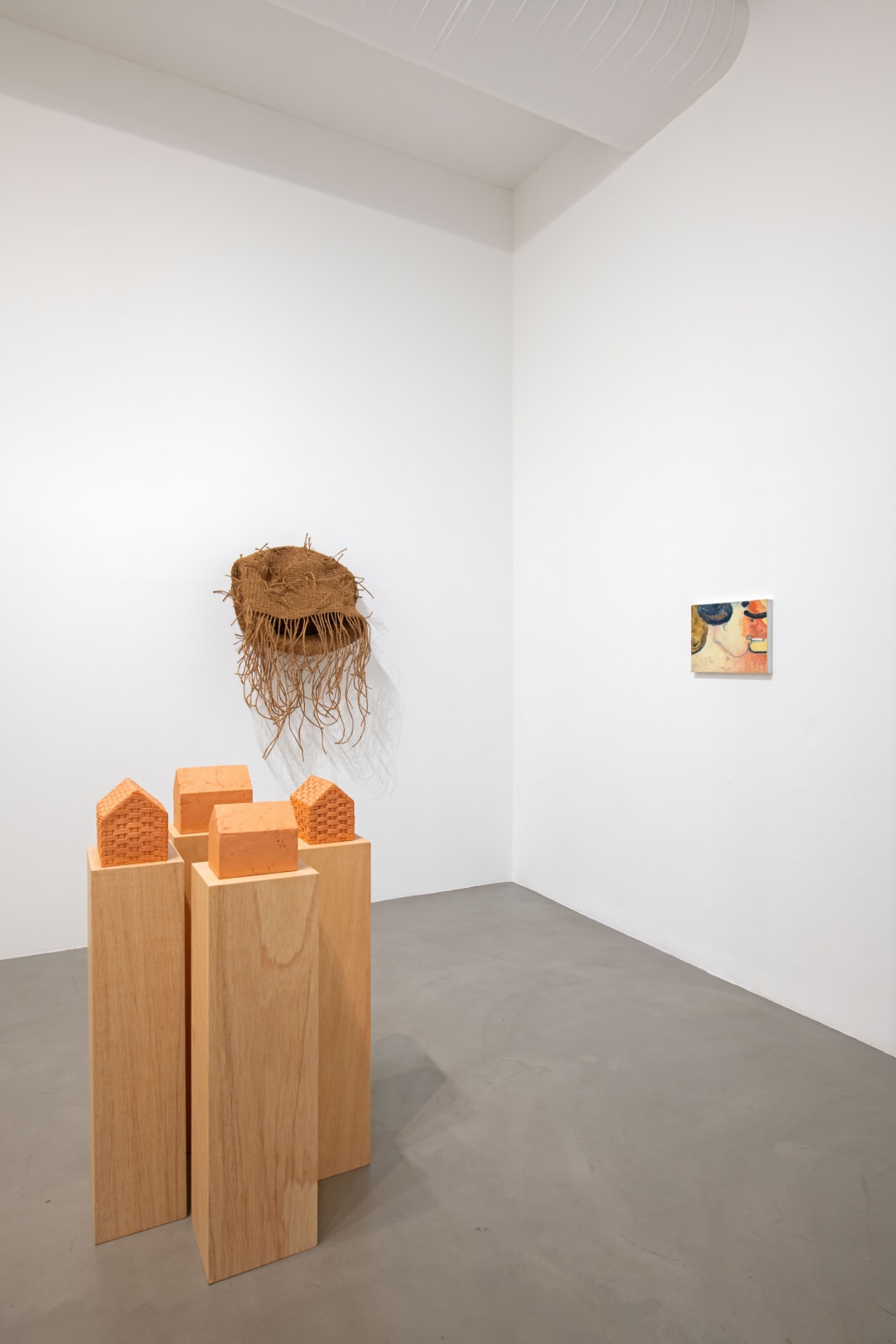
![Marepe Fartura, 2024 acrílica sobre tela [acrylic on canvas] 170 x 222 x 5 cm 66 7/8 x 87 3/8 x 2 in (21426) Ph: Édouard Fraipont](https://artlogic-res.cloudinary.com/w_600,c_limit,f_auto,fl_lossy,q_auto/ws-galerialuisastrina/usr/exhibitions/images/exhibitions/281/marepe5-edouardfraipont13082024artlogic.jpg)

![Palma Cardume, 2024 freijó, fibra de vidro, silicone, moedas diversas [freijó wood, fiberglass, silicone, assorted coins] 91 x 160 cm 354 3/8 x 629 7/8 in 8/8 + 2 AP (22366) Ph: Fernando Mendes](https://artlogic-res.cloudinary.com/w_600,c_limit,f_auto,fl_lossy,q_auto/ws-galerialuisastrina/usr/exhibitions/images/exhibitions/281/2024-cardume-fernando-mendes-4-.jpeg)
![Hiram Latorre Só de pedir me lembro, 2025 óleo e cera de abelha sobre linho [oil and beeswax on linen] 70.5 x 80.5 x 3.5 cm 27 3/4 x 31 3/4 x 1 3/8 in (22363) Ph: Ana Pigosso](https://artlogic-res.cloudinary.com/w_600,c_limit,f_auto,fl_lossy,q_auto/ws-galerialuisastrina/usr/exhibitions/images/exhibitions/281/250626-martins-monteiro-ph-ana-pigosso-003-hr.jpg)
![Arorá Torre (½), 2019 prata sobre ferro e pérola [silver on iron and pearl] 80 x 10 x 8 cm 31 1/2 x 4 x 3 1/8 in (22392)](https://artlogic-res.cloudinary.com/w_600,c_limit,f_auto,fl_lossy,q_auto/ws-galerialuisastrina/usr/exhibitions/images/exhibitions/281/250423_quadra_041_edit.jpg)
![Iagor Peres hz II, 2025 pelematerial e acúmulo de solda inox [pelematerial and stainless steel weld build-up] 142 x 70 x 120 cm 55 7/8 x 27 1/2 x 47 1/4 in (22365) Ph: Erika Mayumi](https://artlogic-res.cloudinary.com/w_600,c_limit,f_auto,fl_lossy,q_auto/ws-galerialuisastrina/usr/exhibitions/images/exhibitions/281/22365_obras_erikamayumi_alta-14.jpg)
![Rodolpho Parigi Ash, 2025 óleo sobre linho [oil on linen] 74.3 x 74.3 x 5.5 cm 29 1/4 x 29 1/4 x 2 1/8 in (22381) Ph: Édouard Fraipont](https://artlogic-res.cloudinary.com/w_600,c_limit,f_auto,fl_lossy,q_auto/ws-galerialuisastrina/usr/exhibitions/images/exhibitions/281/rodolpho_parigi1-edouardfraipont10072025mid.jpg)
![Darks Miranda Incorporado, 2023 bronze, bastão oleoso, spray e acrílica [bronze, oil stick, spray and acrylic] 35 x 58 x 25 cm 13 3/4 x 22 7/8 x 9 7/8 in (22400) Ph: Ana Pigosso](https://artlogic-res.cloudinary.com/w_600,c_limit,f_auto,fl_lossy,q_auto/ws-galerialuisastrina/usr/exhibitions/images/exhibitions/281/drk0039-ana-pigosso.jpg)
![Juliana dos Santos Passagem, da série Dois tempos, 2025 aquarela, guache acrílica e flor sobre tela de algodão [watercolour, acrylic gouache and flower on cotton canvas] 323 x 151 cm 127 1/8 x 59 1/2 in (22385) Ph: Erika Mayumi](https://artlogic-res.cloudinary.com/w_600,c_limit,f_auto,fl_lossy,q_auto/ws-galerialuisastrina/usr/exhibitions/images/exhibitions/281/22385_obras_erikamayumi_alta-8.jpg)
![Cildo Meireles Ovos - versão I - 1a edição, 1970/2018 cerâmica, resina sintética, metal, tinta pva, madeira [ceramic, synthetic resin, metal, pva paint, wood] 11 x 18 x 14 cm 4 3/8 x 7 1/8 x 5 1/2 in 55/100 + 20APs (#20/100) (15899) Ph: Édouard Fraipont](https://artlogic-res.cloudinary.com/w_600,c_limit,f_auto,fl_lossy,q_auto/ws-galerialuisastrina/usr/exhibitions/images/exhibitions/281/cildo_meireles1-edouardfraipont10072025mid.jpg)
![Ana Clara Tito Sem título [Untitled], 2023 argamassa, clarofilito, argila, plástico, papel, transferência fotográfica [mortar, clarofilite, clay, plastic, paper, photo transfer] 90 x 100 x 7 cm 35 3/8 x 39 3/8 x 2 3/4 in (22360) Ph: Pat Kilgore](https://artlogic-res.cloudinary.com/w_600,c_limit,f_auto,fl_lossy,q_auto/ws-galerialuisastrina/usr/exhibitions/images/exhibitions/281/anaclaratito-patkilgore2023_j7a0512_1.jpg)
![Adriano Costa Blush, 2024 tinta acrílica, pastel e verniz sobre bronze [acrylic, pastel and varnish on bronze] 40 x 50 x 11 cm 15 3/4 x 19 3/4 x 4 3/8 in (22379)](https://artlogic-res.cloudinary.com/w_600,c_limit,f_auto,fl_lossy,q_auto/ws-galerialuisastrina/usr/exhibitions/images/exhibitions/281/mw.act.1305-d0-hr.jpg)
![Anna Livia Taborda Monahan Píton-sol, 2024 óleo sobre tela [oil on canvas] 42.3 x 32.3 x 4 cm 16 5/8 x 12 3/4 x 1 5/8 in (22391)](https://artlogic-res.cloudinary.com/w_600,c_limit,f_auto,fl_lossy,q_auto/ws-galerialuisastrina/usr/exhibitions/images/exhibitions/281/pi-ton-sol-2024.png)
![Anna Livia Taborda Monahan Noite quente, 2024 óleo sobre tela [oil on canvas] 37.2 x 42.2 x 4 cm 14 5/8 x 16 5/8 x 1 5/8 in (22390)](https://artlogic-res.cloudinary.com/w_600,c_limit,f_auto,fl_lossy,q_auto/ws-galerialuisastrina/usr/exhibitions/images/exhibitions/281/noite-quente-2024.png)
![Anna Livia Taborda Monahan Ilha, 2024 óleo sobre tela [oil on canvas] 32.2 x 42 x 4 cm 12 5/8 x 16 1/2 x 1 5/8 in (22389)](https://artlogic-res.cloudinary.com/w_600,c_limit,f_auto,fl_lossy,q_auto/ws-galerialuisastrina/usr/exhibitions/images/exhibitions/281/ilha-2024.png)
![Marina Borges I, da série [from the series] Touched by angels, though I fall out of grace, 2024 - 2025 resina, pigmento, vidro e metal [resin, pigment, glass and metal] 7 x 14 x 20 cm 2 3/4 x 5 1/2 x 7 7/8 in (#1/5) (22409) Ph: Erika Mayumi](https://artlogic-res.cloudinary.com/w_600,c_limit,f_auto,fl_lossy,q_auto/ws-galerialuisastrina/usr/exhibitions/images/exhibitions/281/obras_erikamayumi_alta-26.jpg)
![Marina Borges Sem título (Língua) [Untitled (Tongue)], 2019 resina e spike de metal [resin and metal spike] 4 x 8 x 7 cm 1 5/8 x 3 1/8 x 2 3/4 in Edition of 2 plus 2 AP (22368)](https://artlogic-res.cloudinary.com/w_600,c_limit,f_auto,fl_lossy,q_auto/ws-galerialuisastrina/usr/exhibitions/images/exhibitions/281/250624_marina_borges_6.jpg)
![Marina Borges Sem título [Untitled], 2024 látex e pigmento [latex and pigment] dimensões variáveis [variable dimensions] (22367)](https://artlogic-res.cloudinary.com/w_600,c_limit,f_auto,fl_lossy,q_auto/ws-galerialuisastrina/usr/exhibitions/images/exhibitions/281/marina-borges-site-specific-cidade-dorme.jpg)
![Gabriel Branco Jamal, 2023 impressão em papel algodão [printing on Photo Rag] 41.7 x 33 cm 16 3/8 x 13 in (22383)](https://artlogic-res.cloudinary.com/w_600,c_limit,f_auto,fl_lossy,q_auto/ws-galerialuisastrina/usr/exhibitions/images/exhibitions/281/scan17540.jpg)
![Dan Coopey 4 douzen minus 1, 2025 junco, algodão revestido de cera, cascas de ovos [rush, wax coated cotton, egg shells] 42 x 34 x 7 cm 16 1/2 x 13 3/8 x 2 3/4 in (22380)](https://artlogic-res.cloudinary.com/w_600,c_limit,f_auto,fl_lossy,q_auto/ws-galerialuisastrina/usr/exhibitions/images/exhibitions/281/untitled-threedouzen-2021palmwaxcoatedcottoneggshells30x26x5cm.jpeg)
![Dan Coopey the double, 2023 rattan, ferro e goma de mascar [rattan, iron and chewing gum] 173 x 30 x 30 cm 68 1/8 x 11 3/4 x 11 3/4 in (22394)](https://artlogic-res.cloudinary.com/w_600,c_limit,f_auto,fl_lossy,q_auto/ws-galerialuisastrina/usr/exhibitions/images/exhibitions/281/thedouble2023-rattanironchewinggum173x30x30cm.png)
![Dan Coopey beer belly, 2022 barbante de lúpulo [hop twine] 88 x 65 x 40 cm 34 5/8 x 25 5/8 x 15 3/4 in (22395)](https://artlogic-res.cloudinary.com/w_600,c_limit,f_auto,fl_lossy,q_auto/ws-galerialuisastrina/usr/exhibitions/images/exhibitions/281/dan-coopey_id4038_beer-belly_01a-1-.jpg)
![Tonico Lemos Auad Sem Título, casa tramada / casa maciça, 2012 barro queimado [burnt clay] 18 x 21 x 15 cm 7 1/8 x 8 1/4 x 5 7/8 in (9280) Ph: Édouard Fraipont](https://artlogic-res.cloudinary.com/w_600,c_limit,f_auto,fl_lossy,q_auto/ws-galerialuisastrina/usr/exhibitions/images/exhibitions/281/tonico_lemos-1-edouard_fraipont.jpg)
![Allan Gandhi Mau Humor, 2025 óleo sobre tela [oil on canvas] 30 x 40 cm 11 3/4 x 15 3/4 in (22384) Ph: Erika Mayumi](https://artlogic-res.cloudinary.com/w_600,c_limit,f_auto,fl_lossy,q_auto/ws-galerialuisastrina/usr/exhibitions/images/exhibitions/281/22384_obras_erikamayumi_alta-23.jpg)
![Ana Mazzei Demoiselles, 2021 - 2025 madeira tipo peroba mica, cedro e cumaru, tinta acrílica. verniz, linho, ferro e bronze [peroba mica, cedar and cumaru wood, acrylic paint, varnish, linen, iron and bronze] 225 x 300 x 100 cm 88 5/8 x 118 1/8 x 39 3/8 in (22397) Ph: Erika Mayumi](https://artlogic-res.cloudinary.com/w_600,c_limit,f_auto,fl_lossy,q_auto/ws-galerialuisastrina/usr/exhibitions/images/exhibitions/281/22397_obras_erikamayumi_alta-32.jpg)
![Cipriano Nhá, que da lama veio que da lama fica, 2020 técnica mista sobre lençol [mixed media on cotton sheet] 210 x 194 cm 82 5/8 x 76 3/8 in (22418) Ph: Édouard Fraipont](https://artlogic-res.cloudinary.com/w_600,c_limit,f_auto,fl_lossy,q_auto/ws-galerialuisastrina/usr/exhibitions/images/exhibitions/281/cipriano1-edouardfraipont10072025mid.jpg)
![Felipe Seixas Sem título [Untitled], 2025 concreto, pedra, areia e PLA [concrete, stone, sand and PLA] 75 x 61 x 16 cm 29 1/2 x 24 x 6 1/4 in (22362)](https://artlogic-res.cloudinary.com/w_600,c_limit,f_auto,fl_lossy,q_auto/ws-galerialuisastrina/usr/exhibitions/images/exhibitions/281/_mg_6023-copy.jpg)
![Pedro Wirz Ovo por Olho (Vale Morto), 2025 dejetos de tecido, argila vermelha, cola acrílica, espuma expansiva, suporte de restos de ferragem escovada [fabric waste, red clay, acrylic glue, expanding foam, support of brushed hardware scraps] 20 x 15 x 16 cm 7 7/8 x 5 7/8 x 6 1/4 in (22402)](https://artlogic-res.cloudinary.com/w_600,c_limit,f_auto,fl_lossy,q_auto/ws-galerialuisastrina/usr/exhibitions/images/exhibitions/281/obras_erikamayumi_alta-7_artllogic.jpg)
![Pedro Wirz Ovo por Olho (Gel Vermelho), 2024 dejetos de tecido, argila vermelha, cola acrílica, espuma expansiva, suporte de restos de ferragem escovada [fabric waste, red clay, acrylic glue, expanding foam, support of brushed hardware scraps] 20 x 15 x 16 cm 7 7/8 x 5 7/8 x 6 1/4 in (22419) Ph: Édouard Fraipont](https://artlogic-res.cloudinary.com/w_600,c_limit,f_auto,fl_lossy,q_auto/ws-galerialuisastrina/usr/exhibitions/images/exhibitions/281/pedro_wirz1-edouardfraipont10072025mid.jpg)
![Paulo Nazareth CRIADO MUDO [Ou despensa] Mulatt-Baianinha, 2021 resina, objetos diversos e madeira [resin, various objects and wood] 61.5 x 34.5 x 29.5 cm 24 1/4 x 13 5/8 x 11 5/8 in (22401)](https://artlogic-res.cloudinary.com/w_600,c_limit,f_auto,fl_lossy,q_auto/ws-galerialuisastrina/usr/exhibitions/images/exhibitions/281/mw.pnz.1781-d1-hr.jpg)
![Juliana Frontin Contra-volume, 2025 resina sobre linho [resin on linen] 40.5 x 46 x 2.5 cm 16 x 18 1/8 x 1 in (22398)](https://artlogic-res.cloudinary.com/w_600,c_limit,f_auto,fl_lossy,q_auto/ws-galerialuisastrina/usr/exhibitions/images/exhibitions/281/yhp.jft.011-d4_hr.jpg)
![Juliana Frontin volume e repetição, 2023 embalagens de caixas vazias de fita empilhadas [empty packaging from stacked tape boxes] 7 x 11 x 7 cm 2 3/4 x 4 3/8 x 2 3/4 in (22399)](https://artlogic-res.cloudinary.com/w_600,c_limit,f_auto,fl_lossy,q_auto/ws-galerialuisastrina/usr/exhibitions/images/exhibitions/281/yhp.jft.003-d0_hr.jpg)
![Alfredo Jaar Gold in the Morning (Gaze), 1985 impressão fujiflex [fujiflex printing] 83 x 62.5 x 4 cm 32 5/8 x 24 5/8 x 1 5/8 in 1/30 + 6 AP (#1/30) (11917) Ph: Erika Mayumi](https://artlogic-res.cloudinary.com/w_600,c_limit,f_auto,fl_lossy,q_auto/ws-galerialuisastrina/usr/exhibitions/images/exhibitions/281/11917_obras_erikamayumi_alta-1.jpg)






